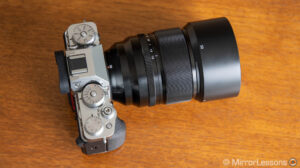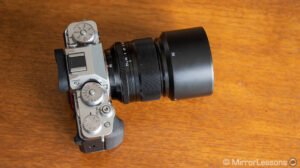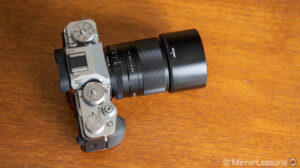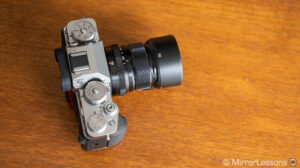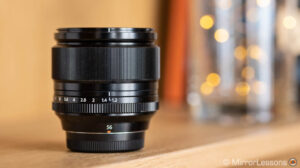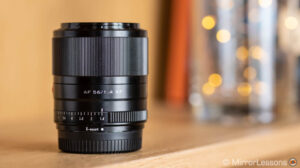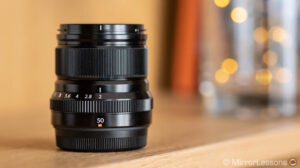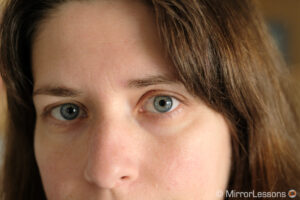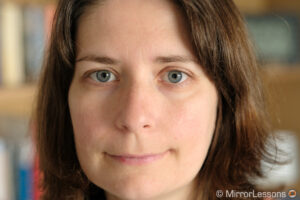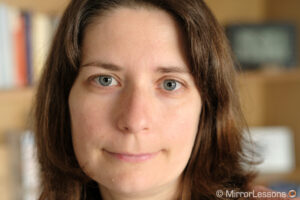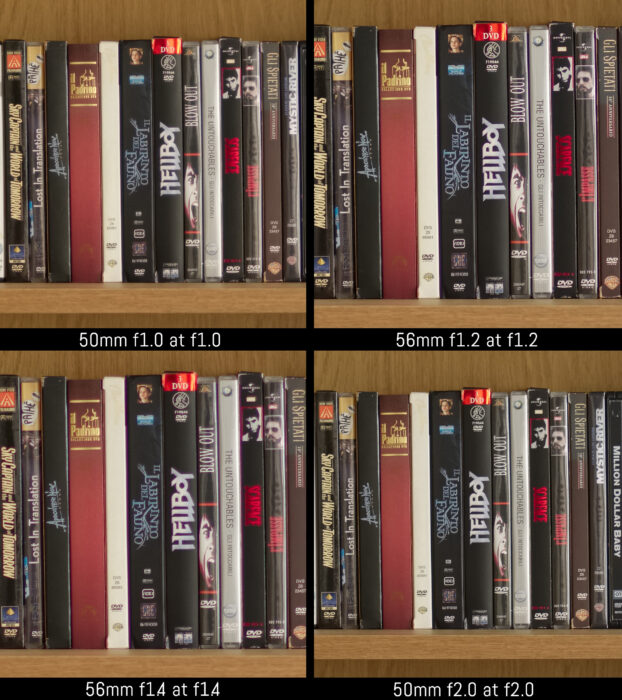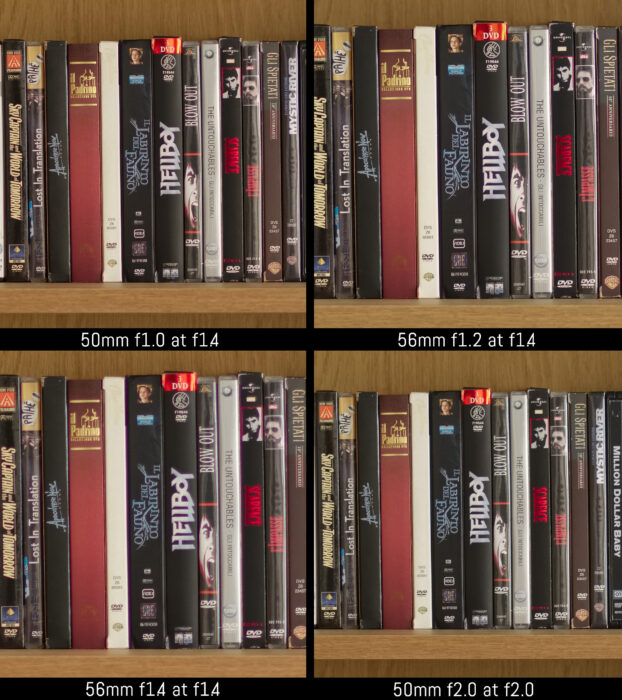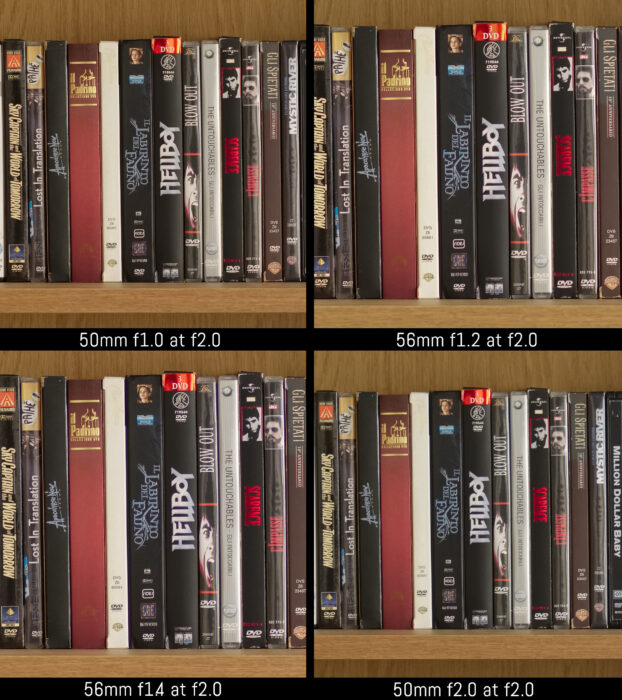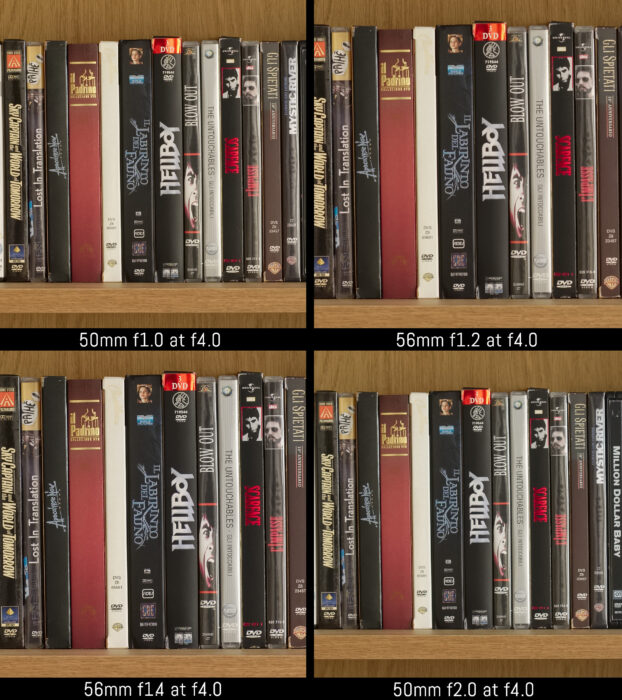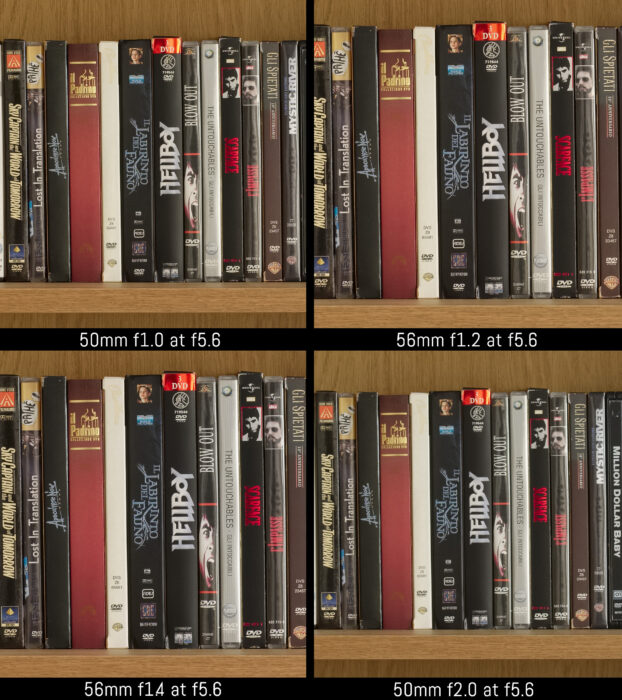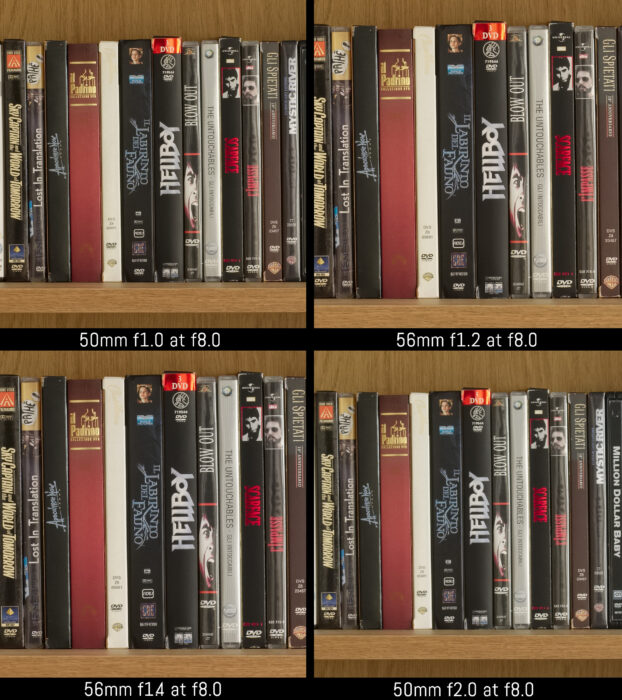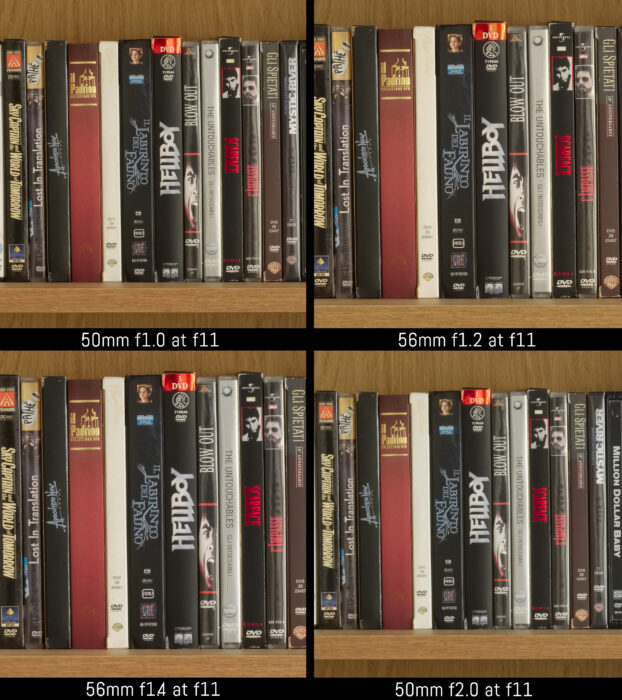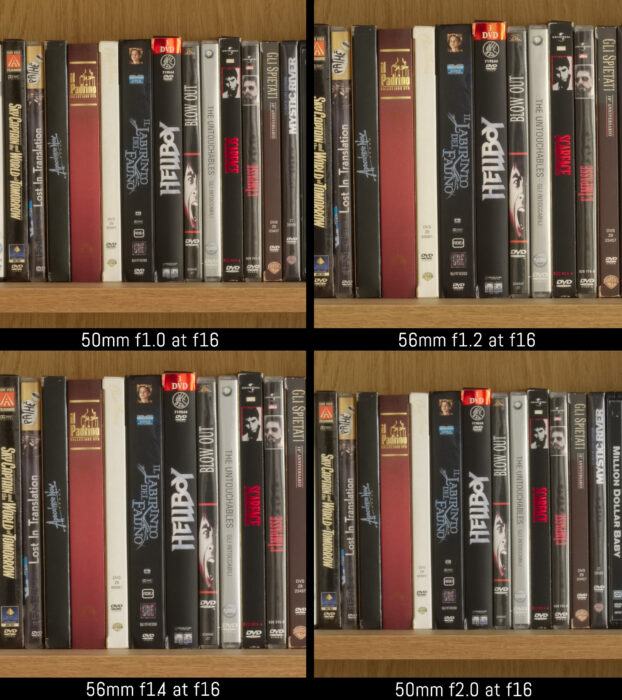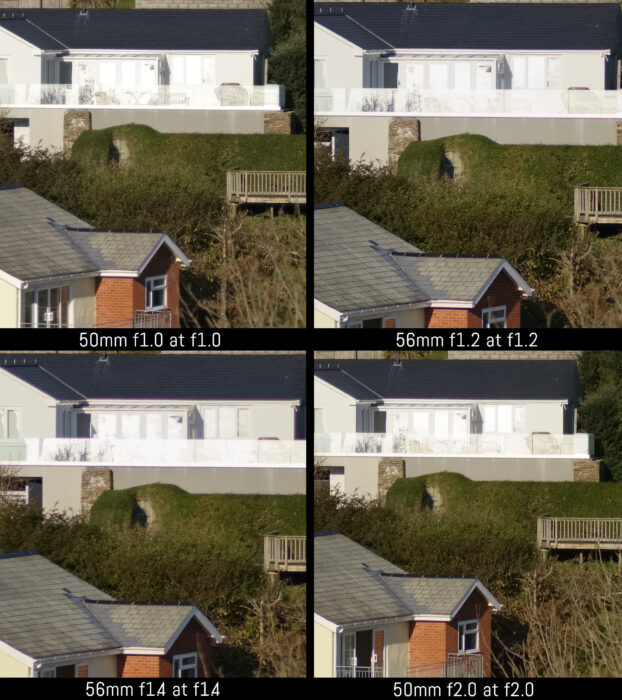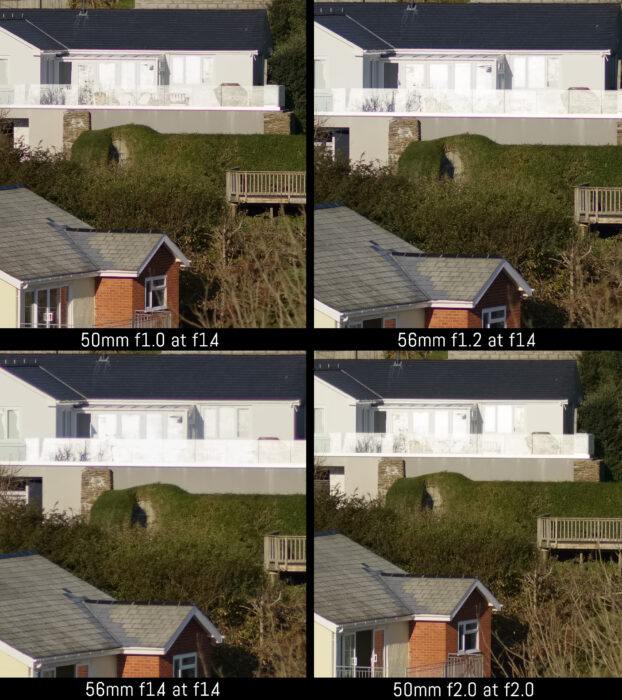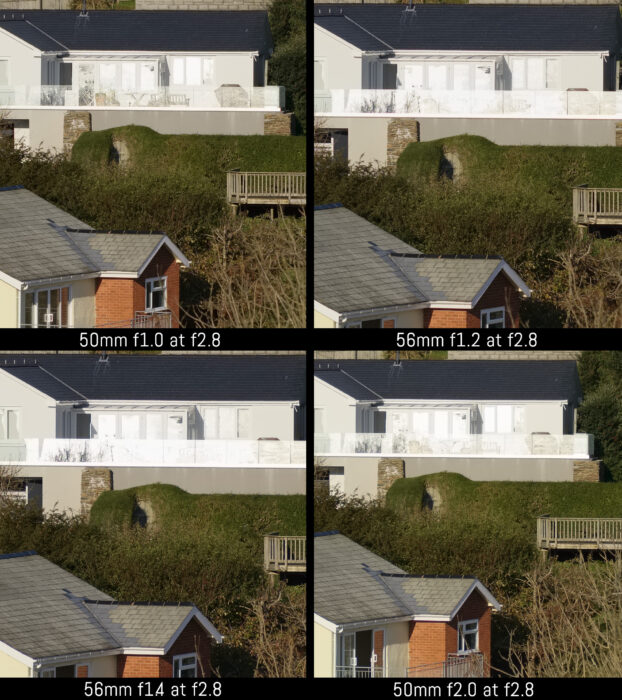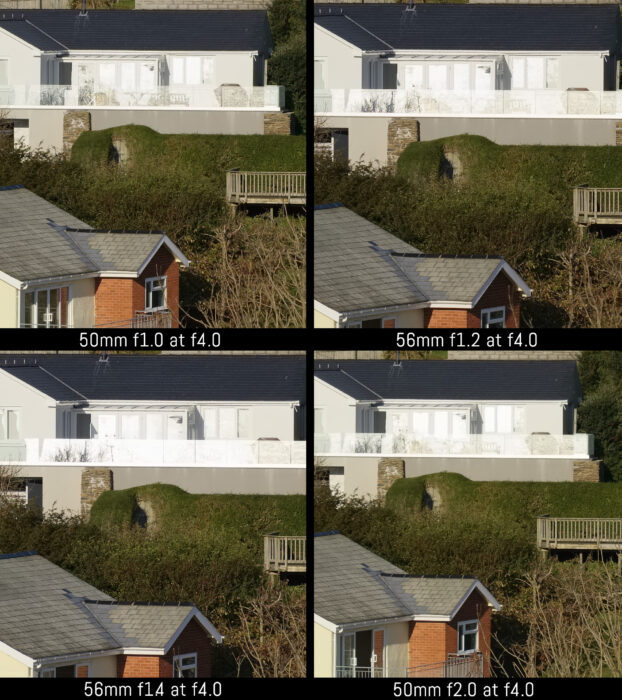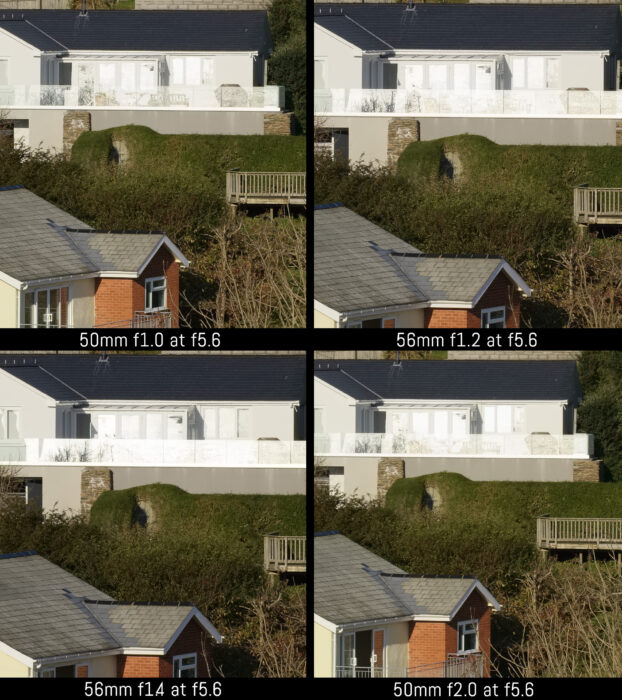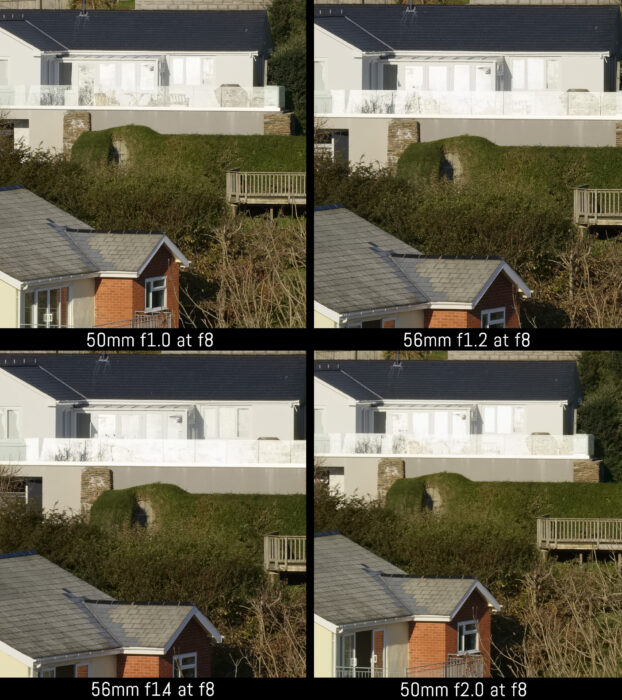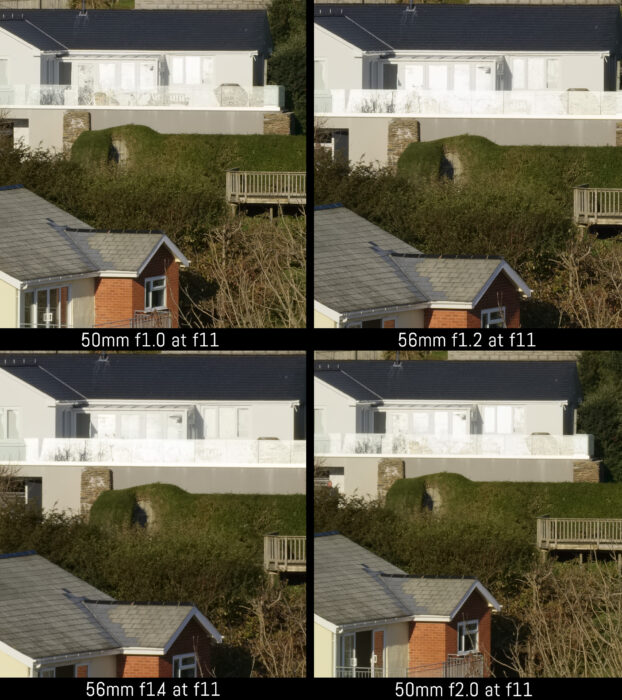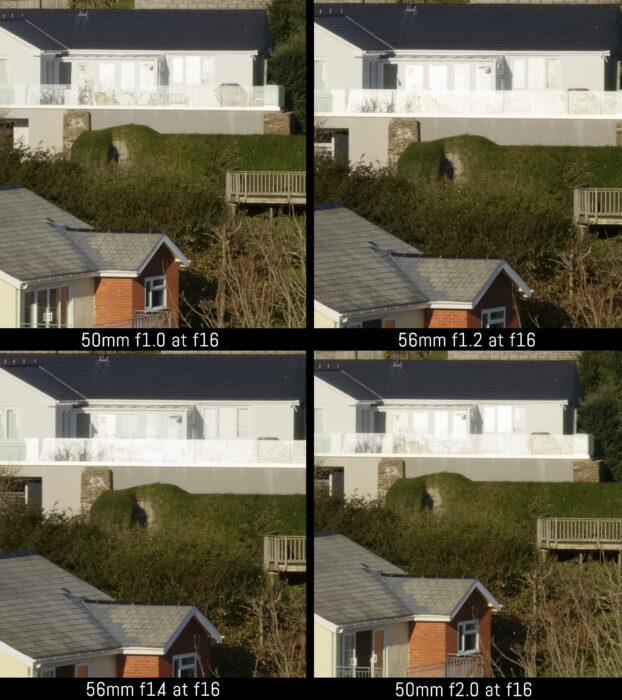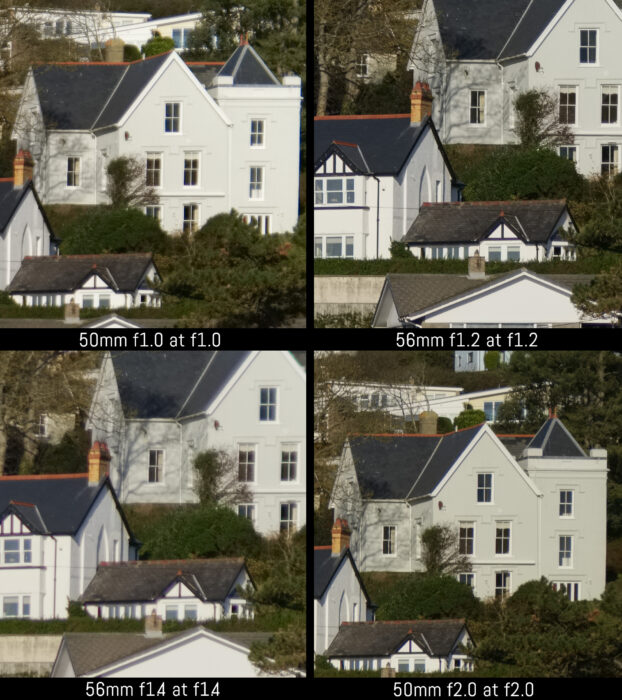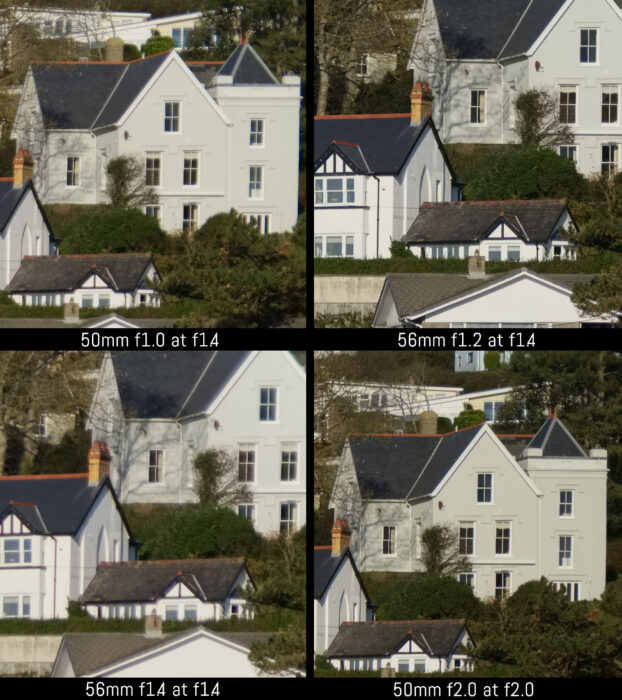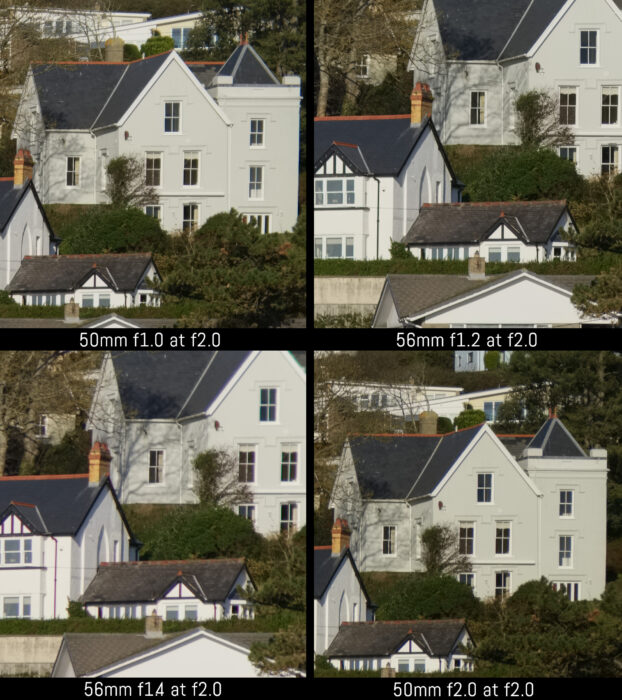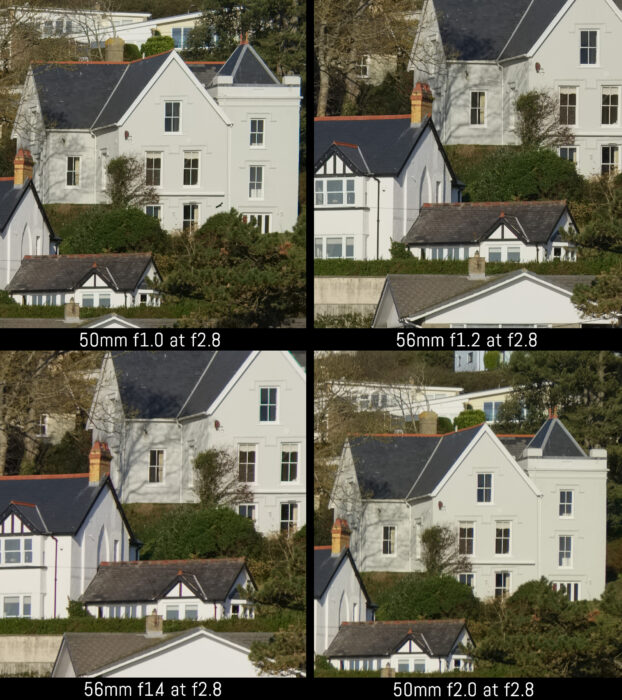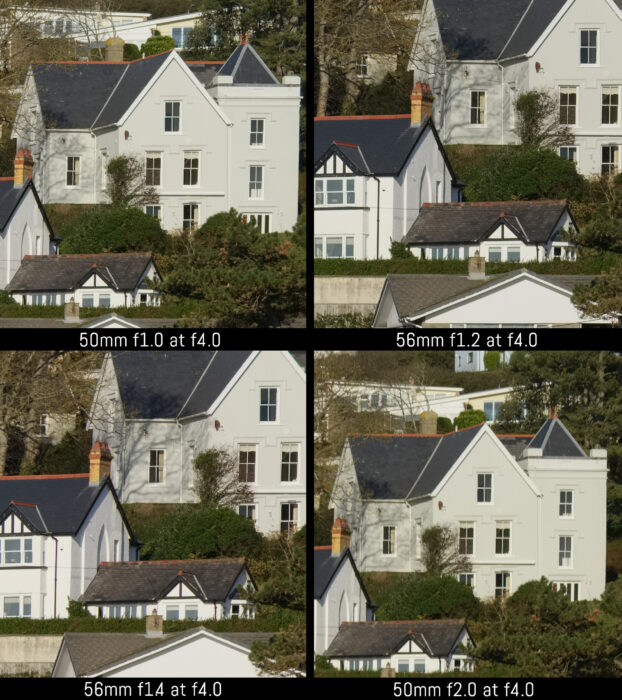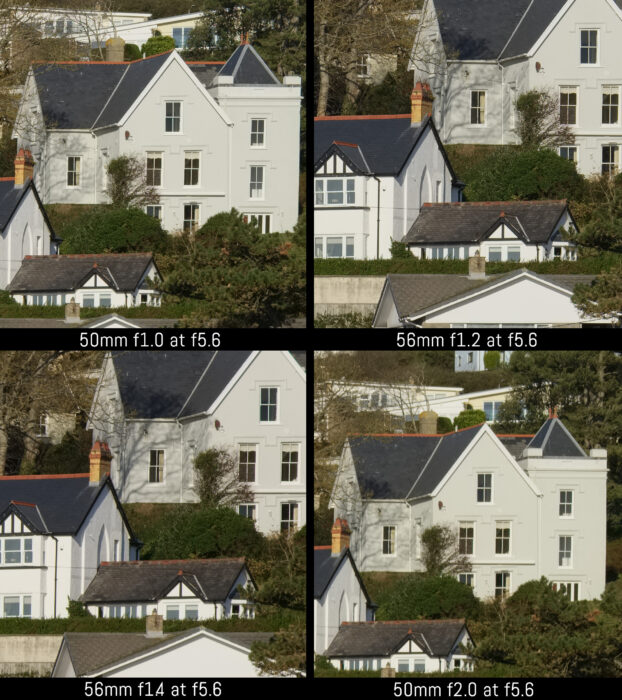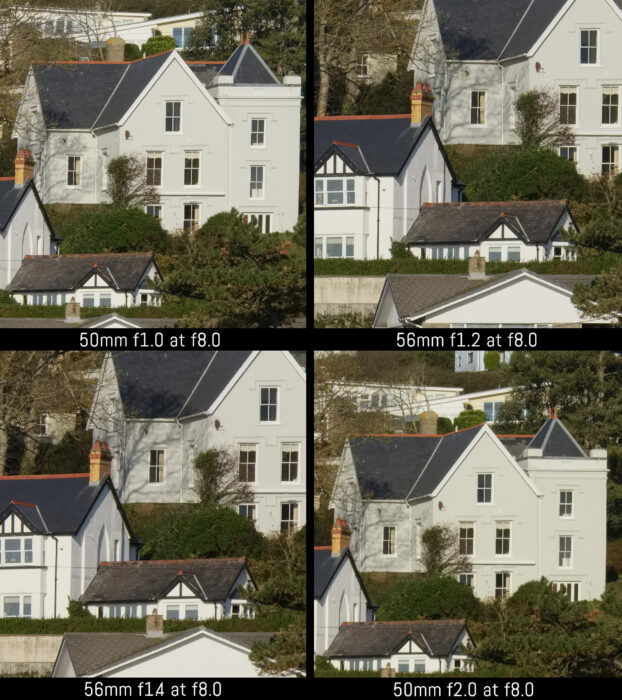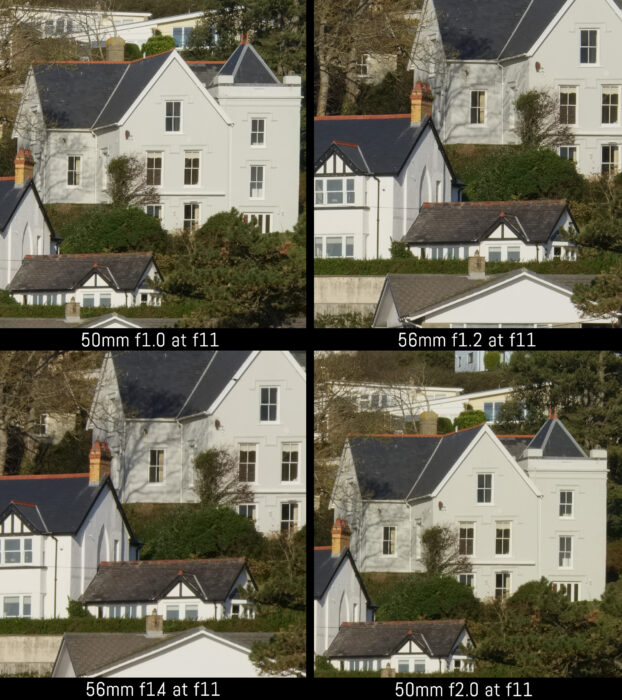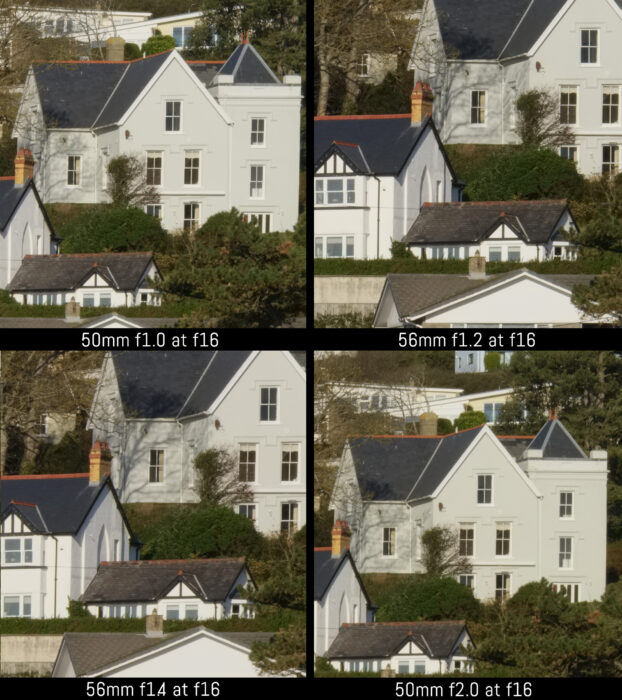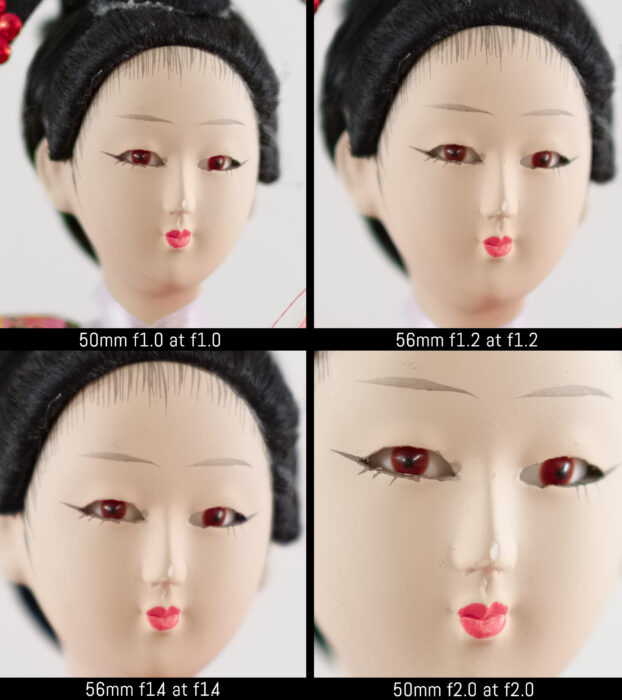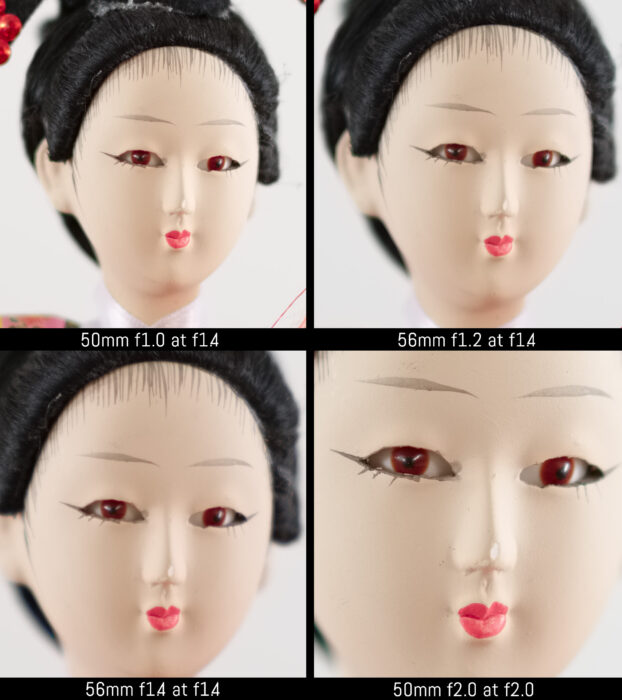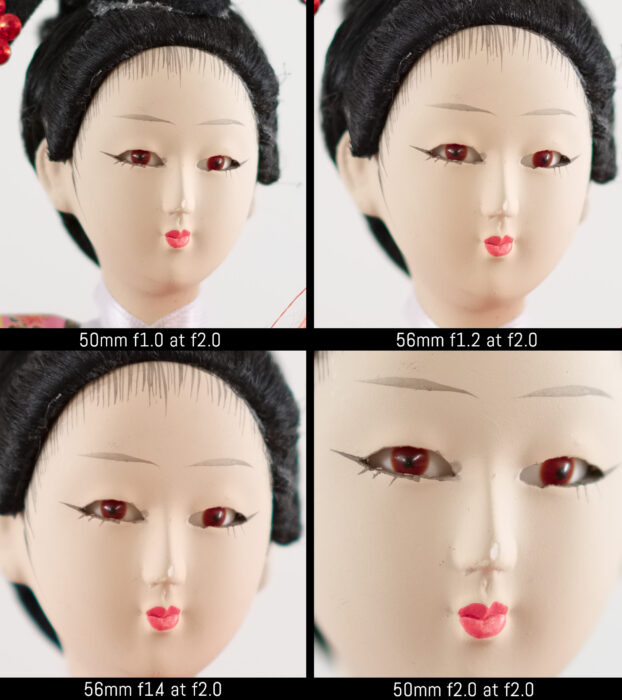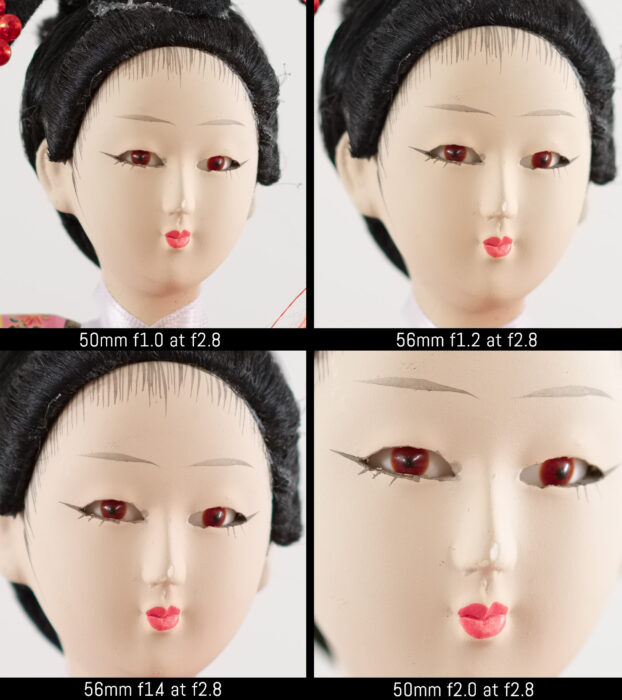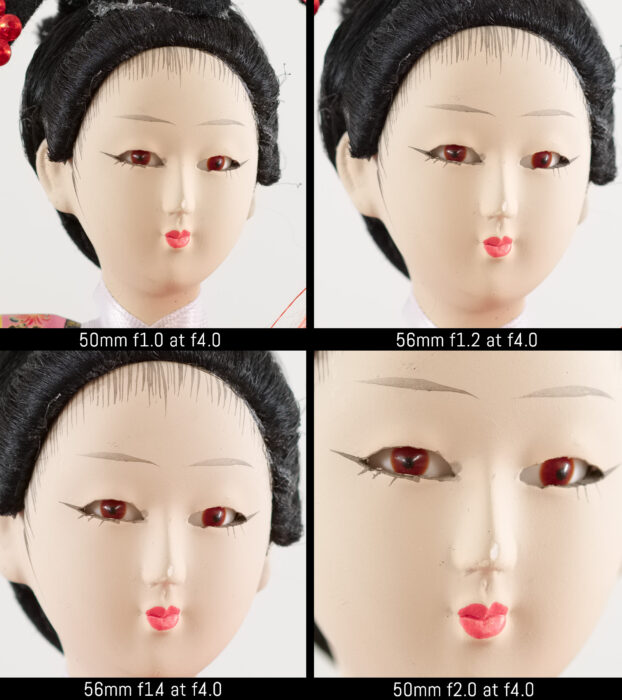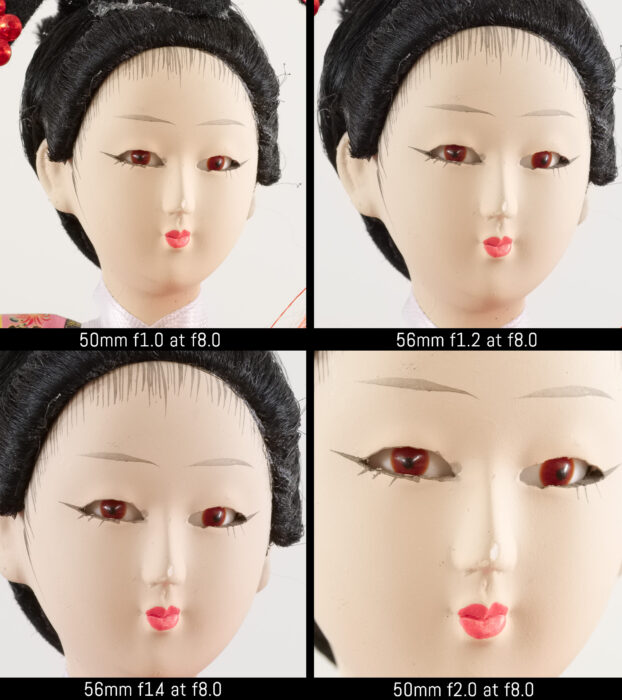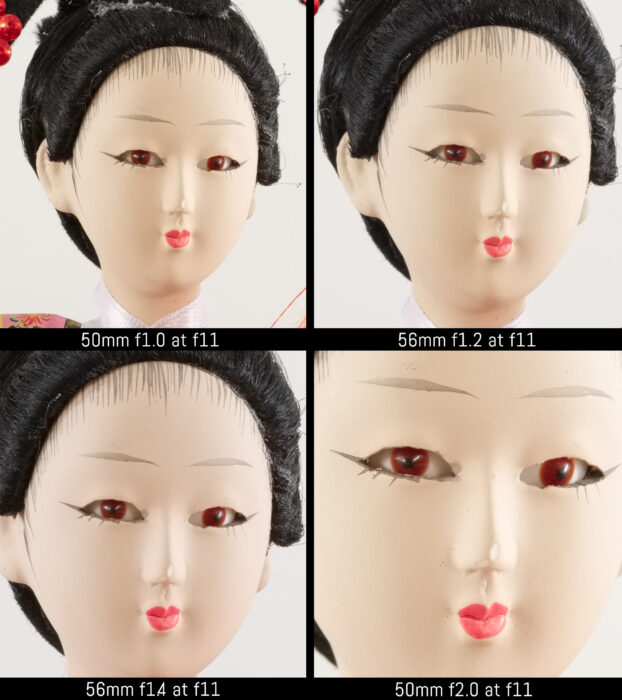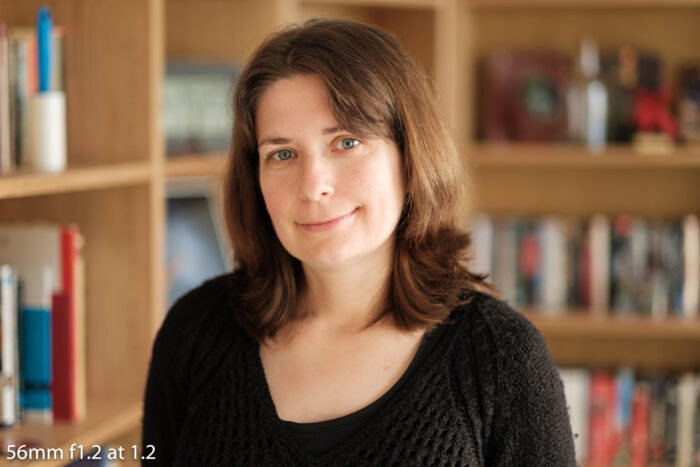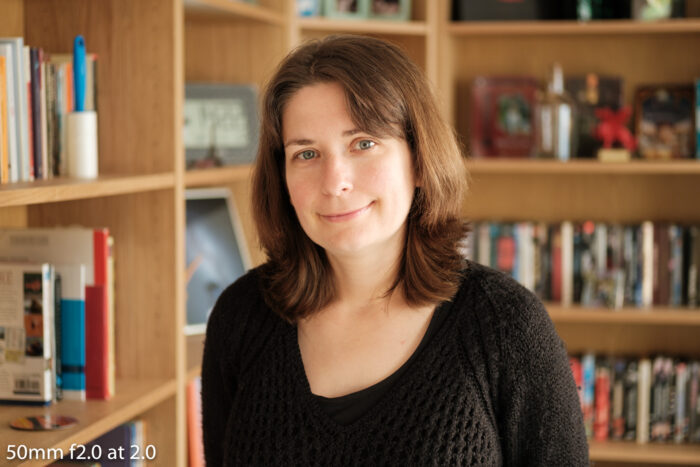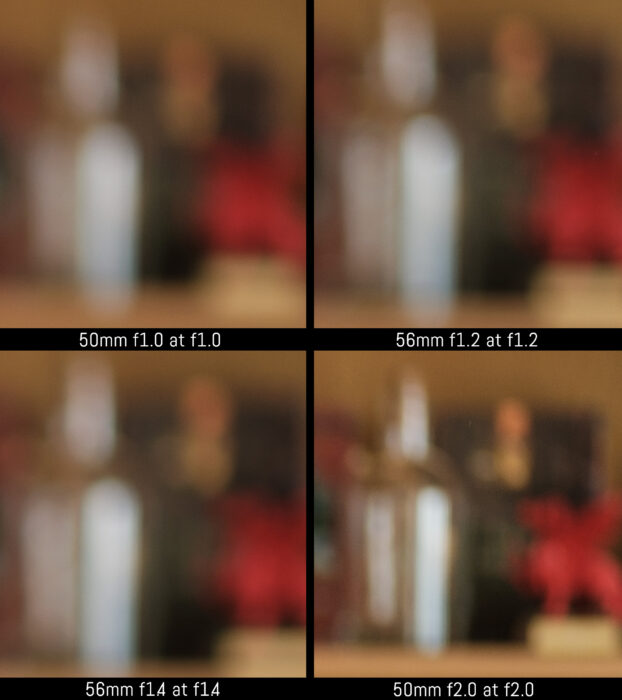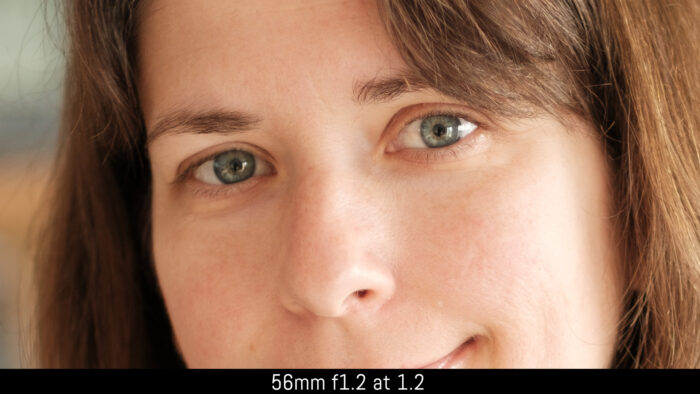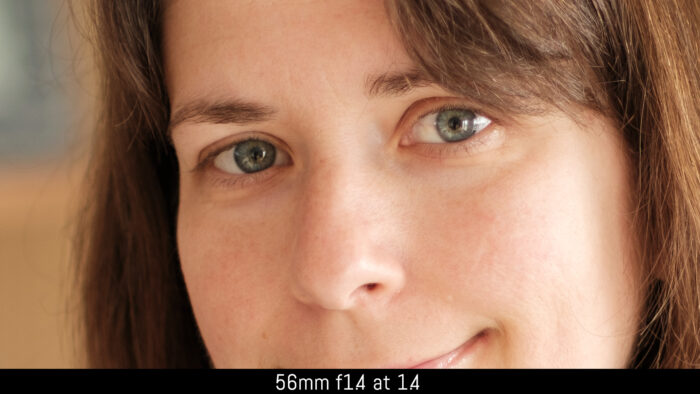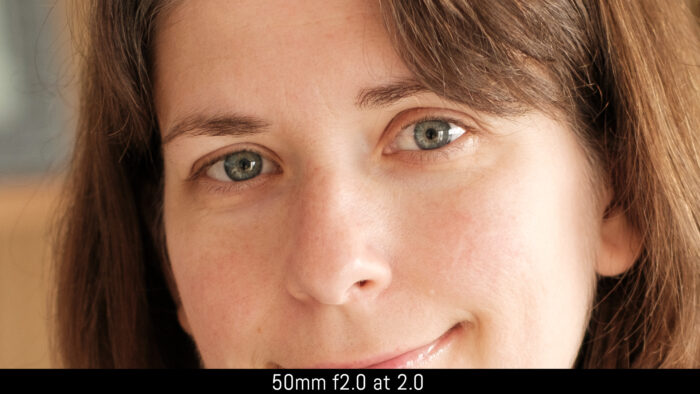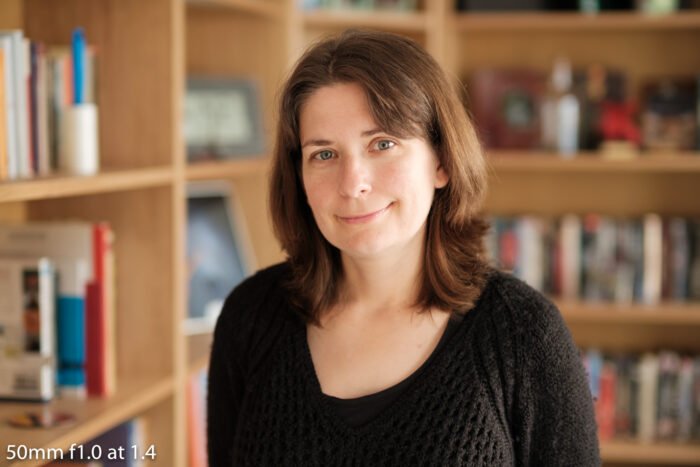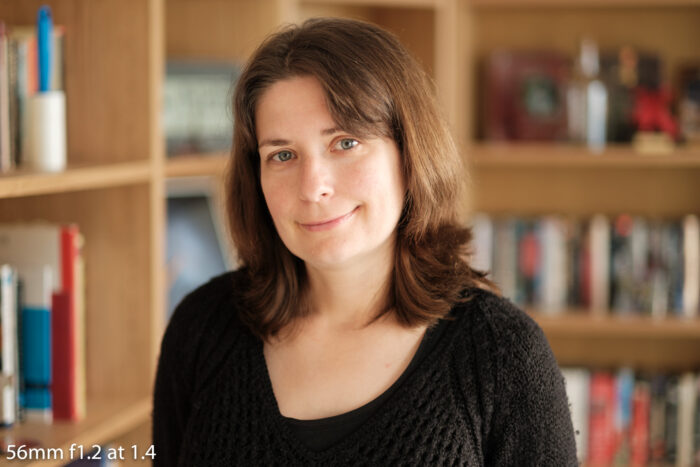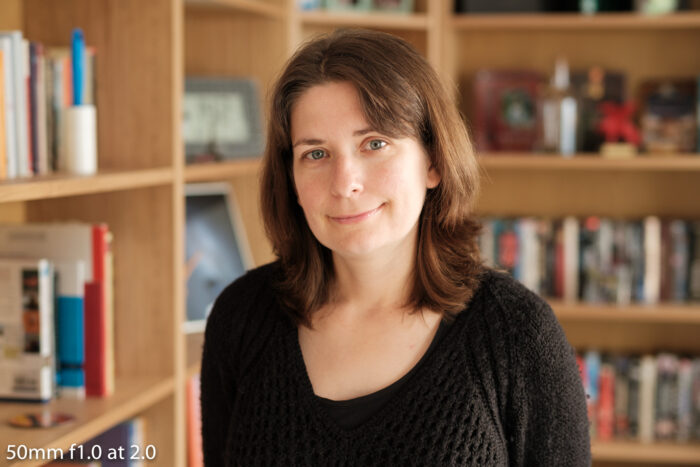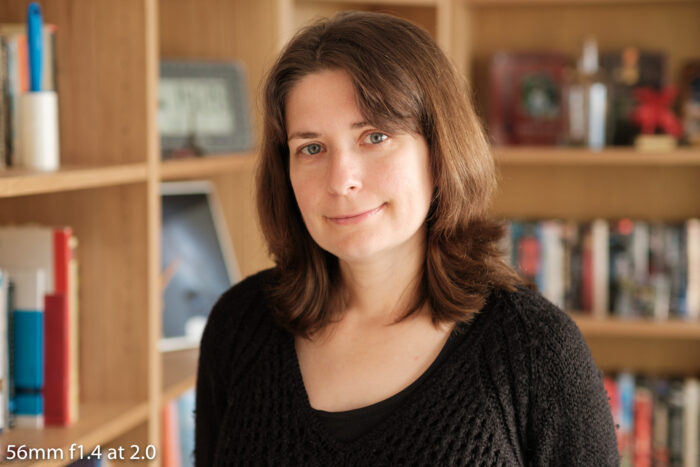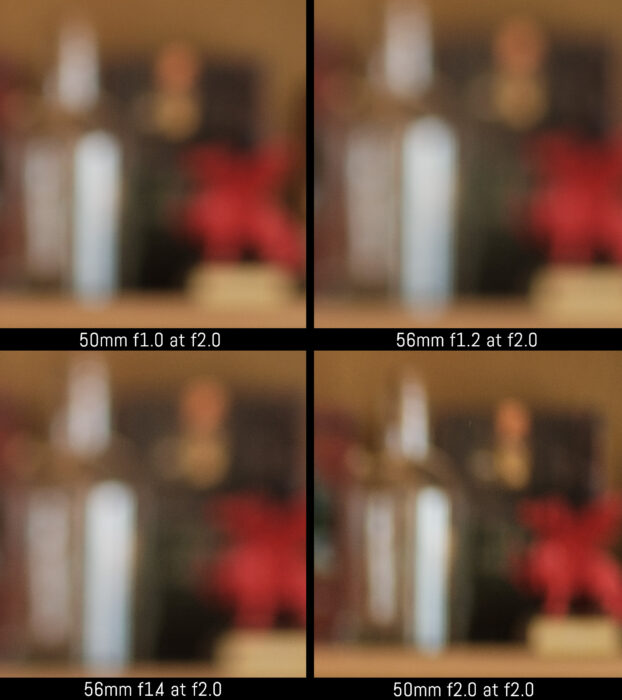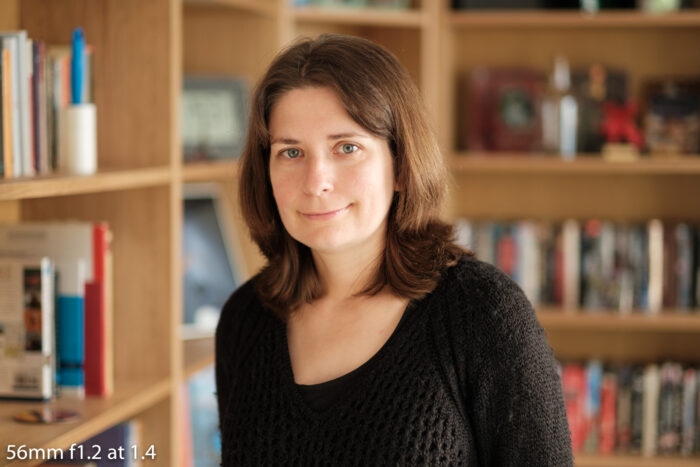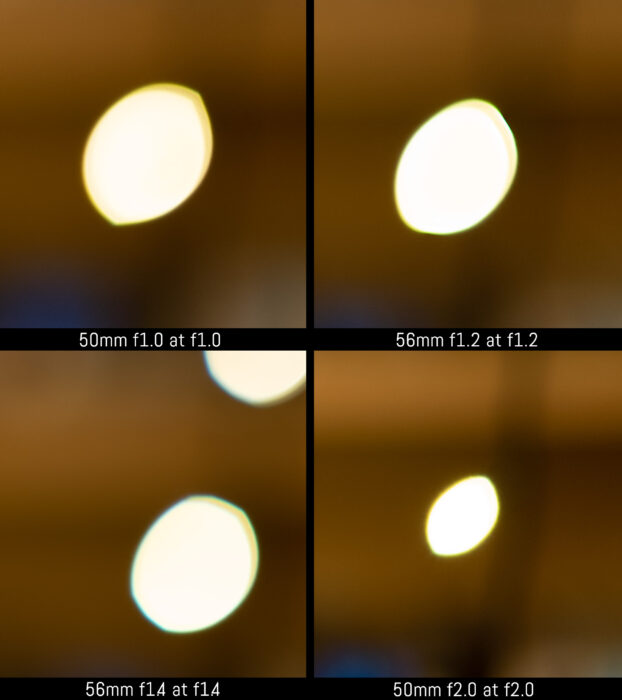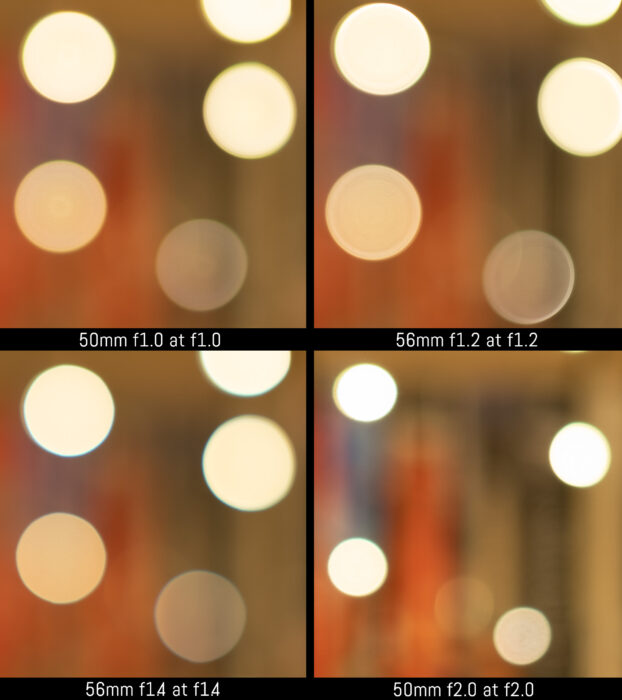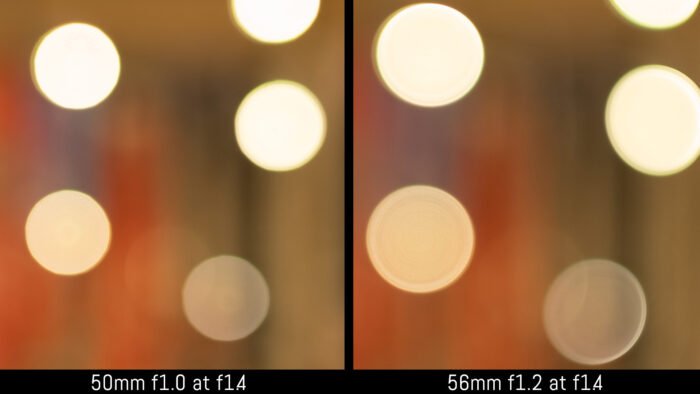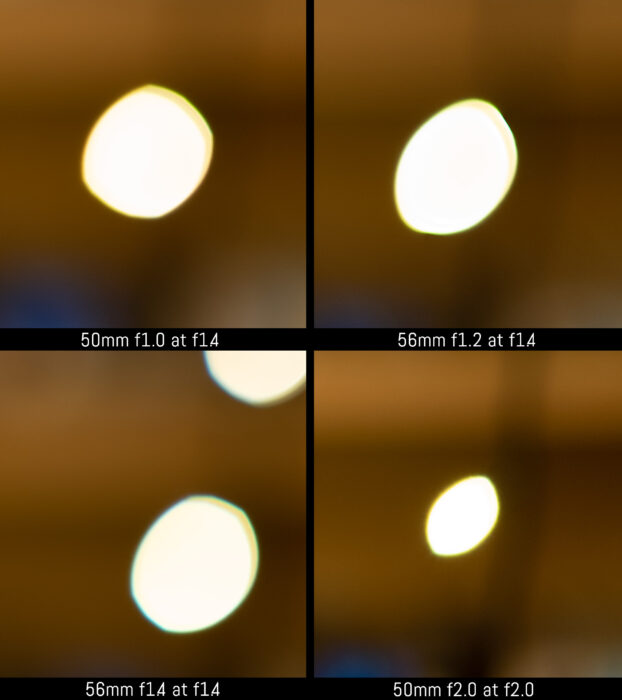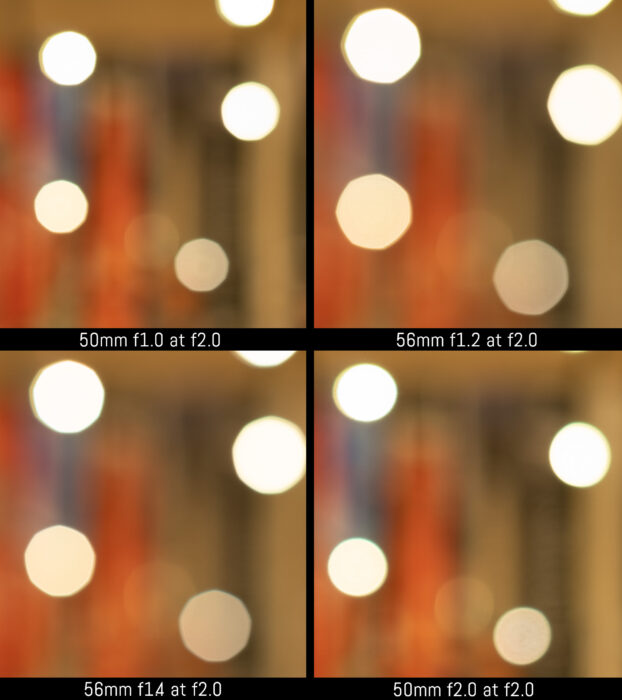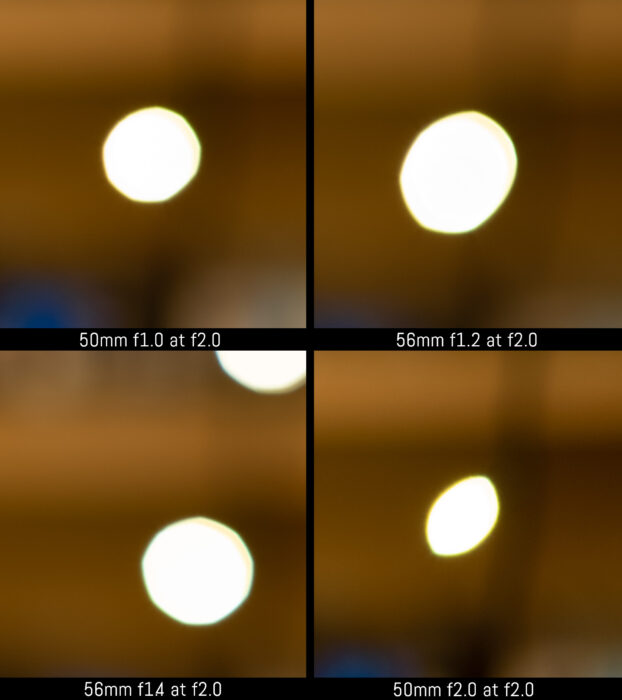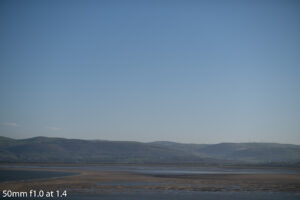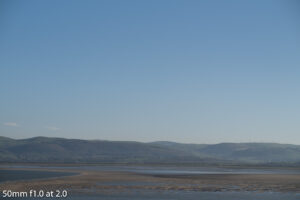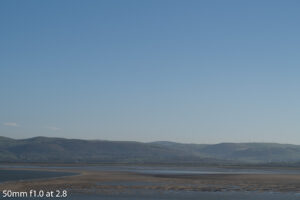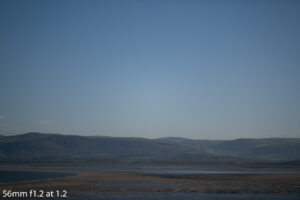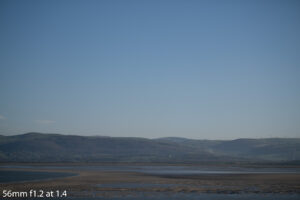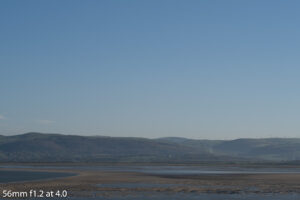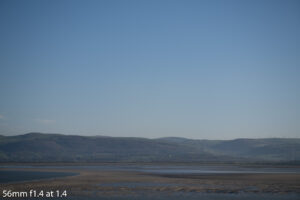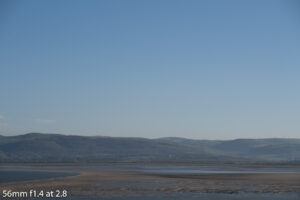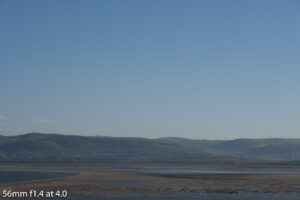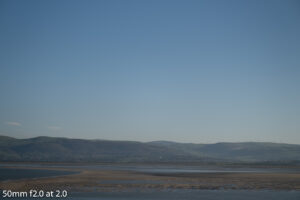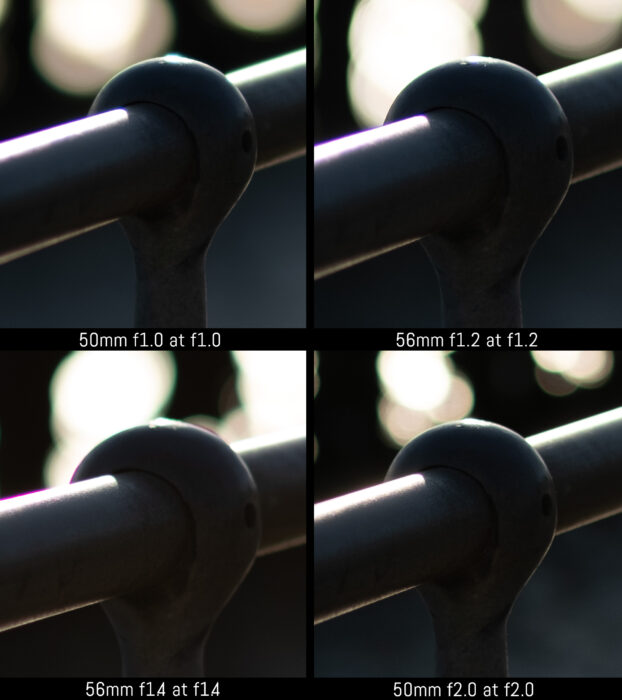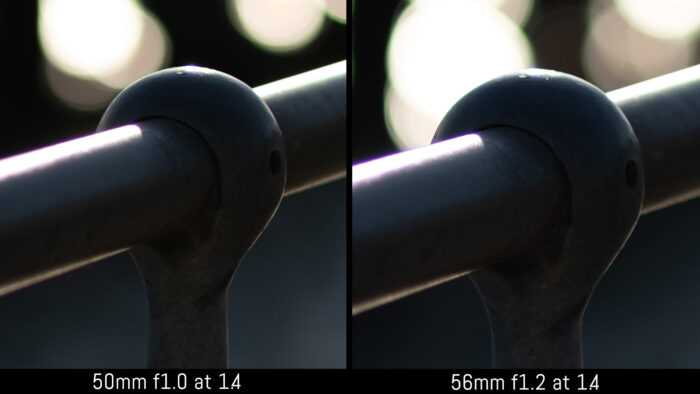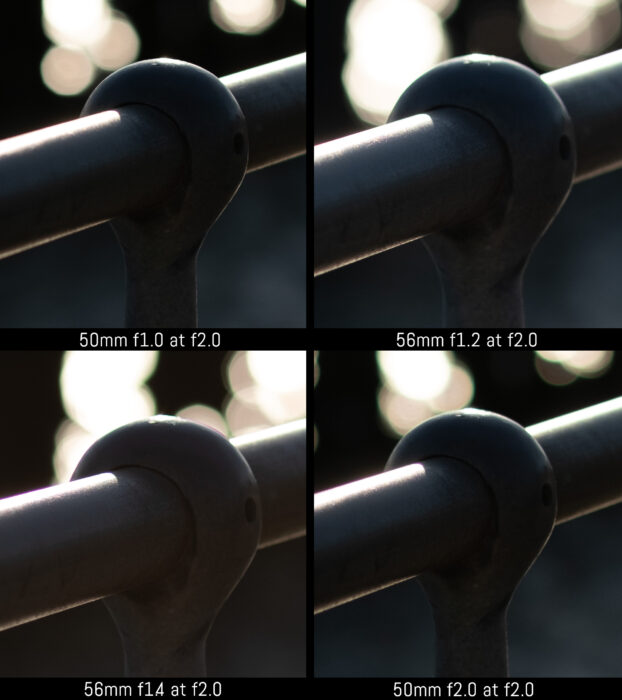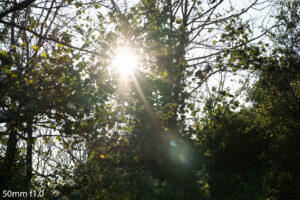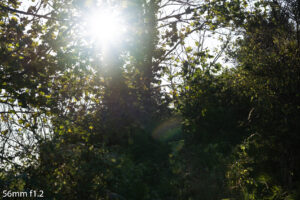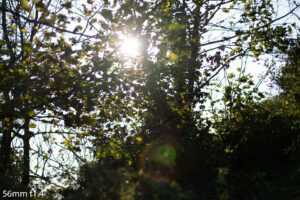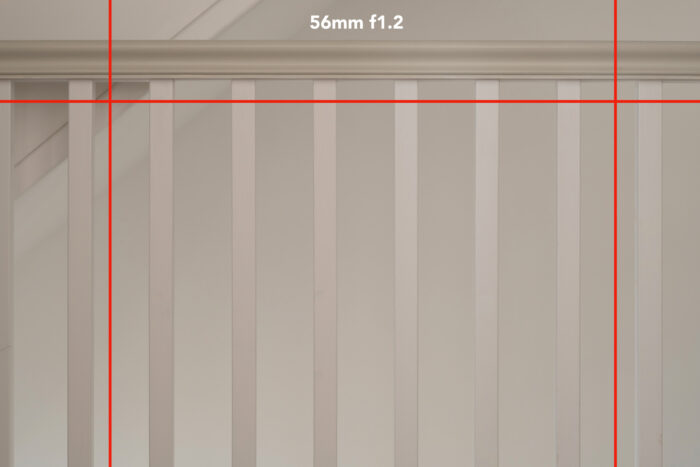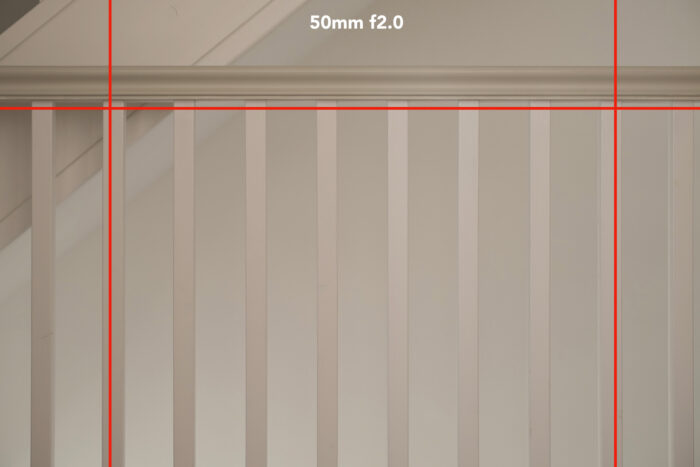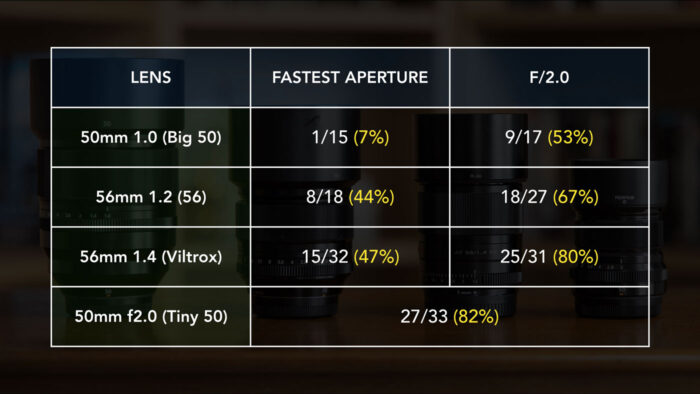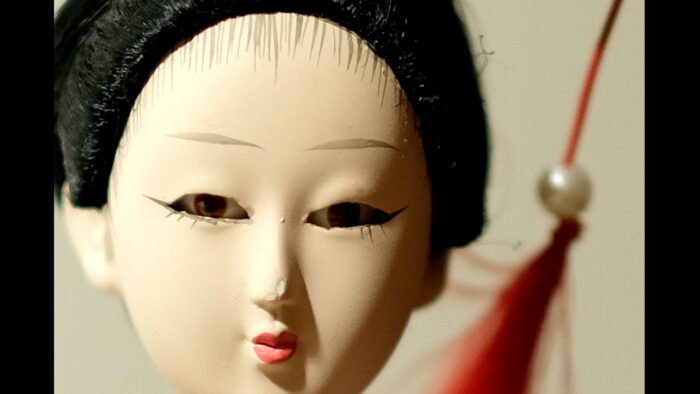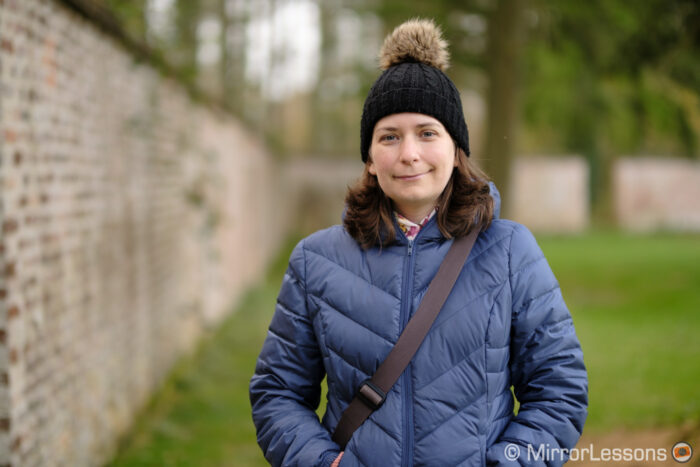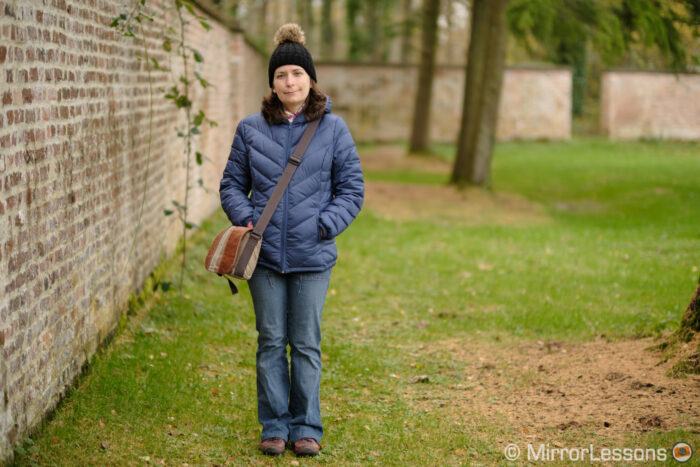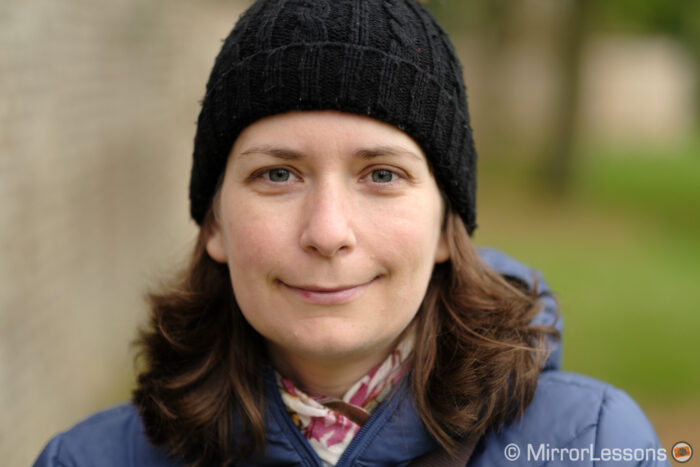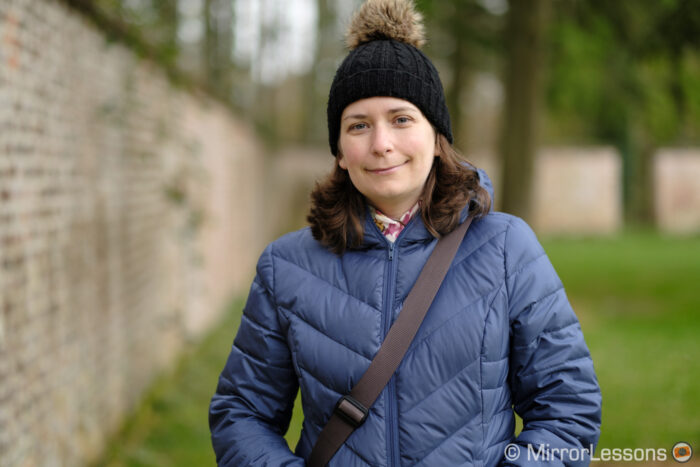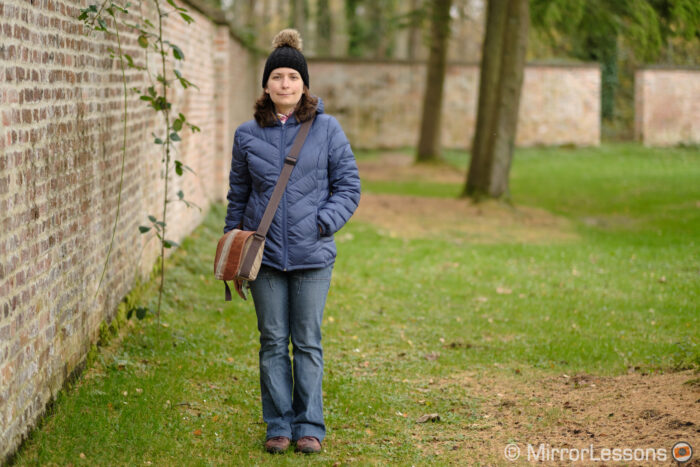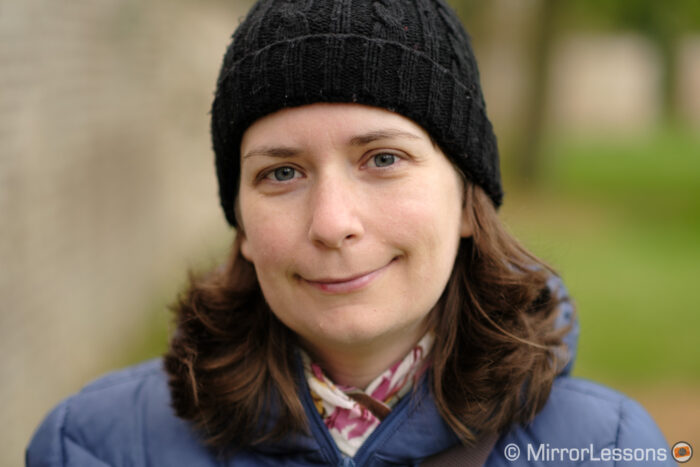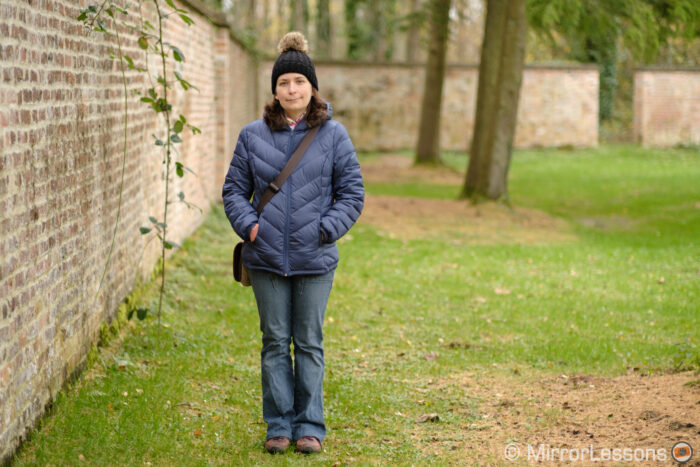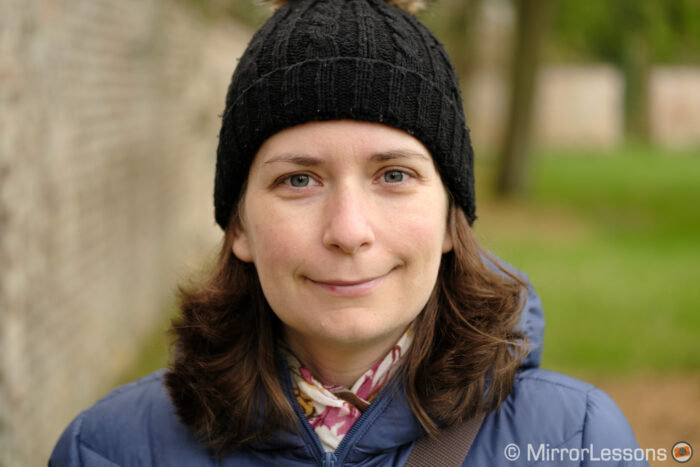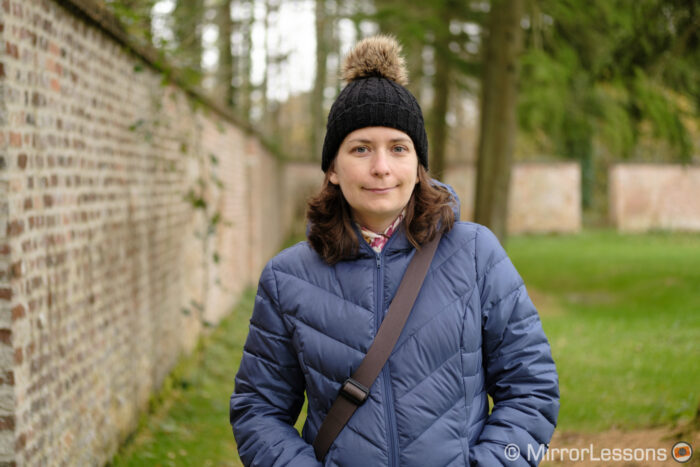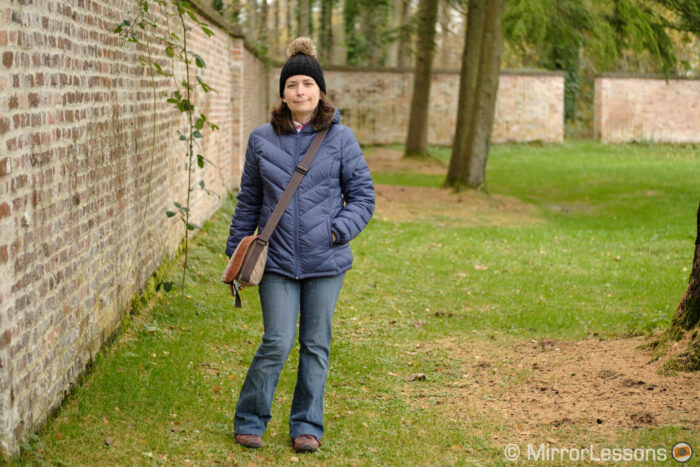There is a lot of choice these days when it comes to short telephoto lenses for portraits within the Fujifilm X-mount system. In addition to various manual focus products, there are now no fewer than 8 lenses ranging from 50mm to 90mm (75mm to 135mm equivalent).
In this comparison, we take a look at four of them: three made by Fujifilm itself, including the world’s first AF lens with a 1.0 aperture, and one made by Viltrox, which is currently one of the only third-party brand to design autofocus lenses for Fuji users.
Ethics statement: we own the 50mm f2 and 56mm 1.4, whereas the 50mm f1 and 56mm f1.2 were loaned to us by Fujifilm UK. We were not asked to write anything about these products, nor were we provided with any sort of compensation. Within the article, there are affiliate links. If you buy something after clicking the link, we will receive a small commission. To know more about our ethics, you can visit our full disclosure page. Thank you!
TABLE OF CONTENTS
1. Video Review
2. Main Specifications
3. Design
4. Aperture, angle of view and min. focus distance
5. Sharpness I (Portrait reference)
6. Sharpness II (landscape reference)
7. Sharpness III (min. focus distance)
8. Portrait examples
9. Bokeh
10. The usual suspects (vignetting, flare etc.)
11. Autofocus performance
12. Manual focus
13. Price
14. Conclusion
15. Other portrait lenses for Fujifilm
16. Additional portrait samples
Video Review
You can watch the video below if you prefer the video format rather than the text format. Please give us a thumbs up and subscribe to our YouTube channel!
Main Specifications
Fujifilm XF 50mm f1.0 R WR
- Mount: X-mount
- Format coverage: APS-C
- Focal length: 50mm
- 35mm format equivalent: 76mm
- Weather sealing: Yes
- Maximum aperture: 1.0
- Minimum aperture: 16
- Number of aperture blades: 9
- Angle of view: 31.7°
- Closest focusing distance: 70cm
- Maximum image magnification: 0.08x
- Lens configuration: 12 elements / 9 groups
- Special elements: 2 ED and 1 aspherical
- Lens surface coating: Yes
- Optical stabilisation: None
- Dimensions: ø87 x 103.5mm
- Filter diamater: ø77mm
- Weight: 845g
Fujifilm XF 50mm f2.0 R WR
- Mount: X-mount
- Format coverage: APS-C
- Focal length: 50mm
- 35mm format equivalent: 76mm
- Weather sealing: Yes
- Maximum aperture: 2.0
- Minimum aperture: 16
- Number of aperture blades: 9
- Angle of view: 31.7°
- Closest focusing distance: 39cm
- Maximum image magnification: 0.15x
- Lens configuration: 9 elements / 7 groups
- Special elements: 1 ED
- Lens surface coating: Yes
- Optical stabilisation: None
- Dimensions: ø60 x 59.4mm
- Filter diamater: ø46mm
- Weight: 200g
Fujifilm XF 56mm f1.2 R
- Mount: X-mount
- Format coverage: APS-C
- Focal length: 56mm
- 35mm format equivalent: 85mm
- Weather sealing: No
- Maximum aperture: 1.2
- Minimum aperture: 16
- Number of aperture blades: 7
- Angle of view: 28.5°
- Closest focusing distance: 70cm
- Maximum image magnification: 0.09x
- Lens configuration: 11 elements / 8 groups
- Special elements: 2 ELD and 1 aspherical
- Lens surface coating: Yes
- Optical stabilisation: None
- Dimensions: ø73.2 x 69.7mm
- Filter diamater: ø62mm
- Weight: 405g
Viltrox XF 56mm f1.4
- Mount: X-mount
- Format coverage: APS-C
- Focal length: 56mm
- 35mm format equivalent: 85mm
- Weather sealing: No
- Maximum aperture: 1.4
- Minimum aperture: 16
- Number of aperture blades: 9
- Angle of view: 28°
- Closest focusing distance: 60cm
- Maximum image magnification: 0.1x
- Lens configuration: 10 elements / 9 groups
- Special elements: 1 ED and 1 high refractive
- Lens surface coating: nd
- Optical stabilisation: None
- Dimensions: ø65 x 72mm
- Filter diamater: ø52mm
- Weight: 290g
Design
The 50mm f1.0 stands out with its imposing size. All the other lenses are much smaller. I don’t find the large size terrible to handle on the X-T4 but you definitely feel all the 849g of weight.

The three Fujinon lenses come with a plastic hood, whereas the Viltrox has a metal hood with a plastic mount.
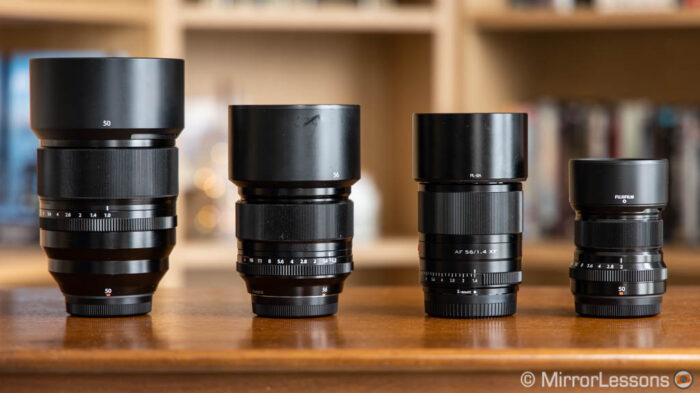
All four lenses feature a metal build but only the two 50mm are weather sealed. The Fuji 50mm f2 is also available in silver.
You’re not going to find any buttons or switches on the four lenses, you just have the aperture ring and the focus ring.
Concerning the feedback of the aperture ring:
- the 50mm f2 is the most precise, you feel the 1/3 steps as you turn the ring very well
- the 50mm f1.0 is on the same level but with a smoother movement that produces less noise
- the 56mm f1.2 aperture ring is the most free-moving out of the four lenses, so it is probably the one you might end up accidentally turning
- the Viltrox 56mm has a click-less aperture ring. The only faint click you hear is at f16 or when you go to the Automatic mode. Usually a click-less ring allows you to make smoother adjustments, which is appreciated by video-makers, but in the case of the Viltrox, you clearly see the 1/3 jumps in the image when rotating the ring, so it’s a click-less ring without the benefit of a click-less ring.
All four lenses have a fly-by-wire focus ring:
- The 50mm f2 is the most balanced in terms of smoothness and resistance, followed closely by the 56mm 1.2
- the 50mm f1.0 ring is very smooth but with less resistance in comparison to the other two Fuji lenses
- the Viltrox ring is a bit irregular and doesn’t give you the same smoothness as the other lenses when turned
That said, the feeling of the ring is one thing, how it delivers in terms of manual focus precision is another because being an electronic type (fly-by-wire), it doesn’t move the optical elements directly so it’s up to the electronics of the camera and lens. I discuss the manual focus experience further down in the article.

Occasional malfunction with the Viltrox 56mm 1.4
My copy of the Vitrox lens malfunctioned a few times when mounted on the X-T4, causing the live view on the screen to go black intermittently. Turning off the camera, unmounting and re-mounting the lens gets things back to normal. Make sure to rotate the lens firmly when attaching it to the camera and listen for the confirmation click sound.
Finally, the Viltrox has a unique feature: a micro USB port at the back of the lens which is used to update the lens’ firmware. With the Fujifilm lenses, you use the camera and an SD card to update the software.
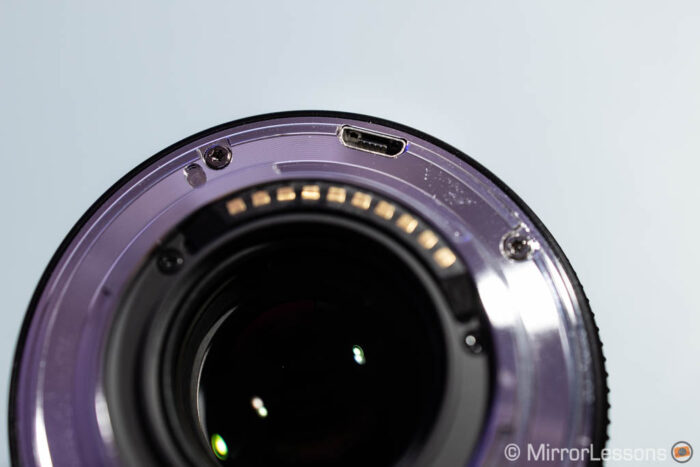
Aperture, angle of view and minimum focus distance
Each lens has a different maximum aperture. Below is a simple infographic that shows you the difference in f stops: the 50mm f1.0 is half a stop faster than the 56mm f1.2, which is half a stop faster than the Viltrox 56mm f1.4. The latter is one stop faster than the 50mm f2.0.
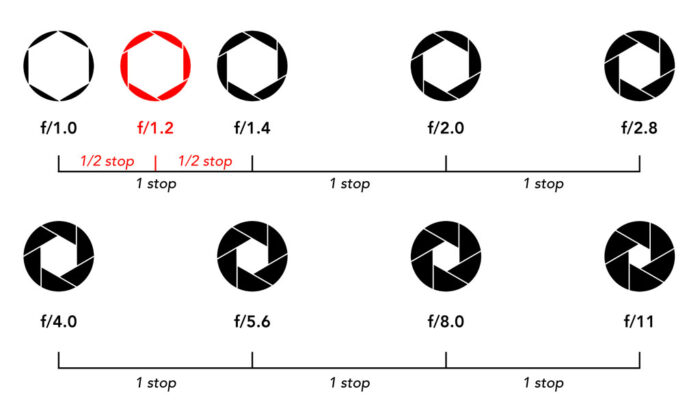
The F stop doesn’t give the actual measurement of the light transmission of the lens (for that there is the T stop), so two lenses set with the same aperture value may not let through the same amount of light.
I took a picture of the same artificially lit scene with each lens set at 2.8: the Fuji lenses capture more or less the same exposure, whereas the Viltrox is about 20% darker.
Then we have the angle of view. Despite being labelled with the same focal length, the 50mm f2.0 is wider than the f1.0 version and the 56mm f1.2 is sligthly narrower than the Viltrox 56mm, as you can see below. Nothing to worry about, but worth mentioning.
Perhaps you’ll be more interested to see the difference between 50mm and 56mm. You can see two examples below with a portrait and a landscape shot.
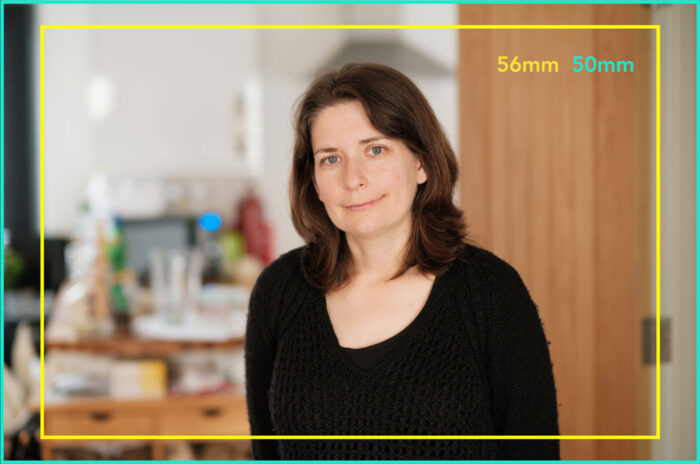

Finally we have the minimum focus distance and magnification factor. The 50mm f2 leads with the shortest distance available and the highest magnification. In other words, you can get closer to an object or a person with it than with any of the other lenses.
- Fujifilm 50mm f2: 39cm (0.15x)
- Viltrox 56mm f1.4: 60cm (0.1x)
- Fujifilm 56mm f1.2: 70cm (0.09x)
- Fujifilm 50mm f1.0: 70cm (0.08x)
Sharpness I (Portrait reference)
Sharpness is not a quick thing to evaluate because lenses can give you different results not just depending on the aperture, but also on the focus distance.
Processing the RAW files
I used Iridient Developer to compare sharpness because it is the software that renders the details of the Fuji X-Trans RAF files better than any other in my opinion. If you use Lightroom Classic, you can achieve similar results by increasing Sharpness to 50 and Detail to 100.
My first test was taken with a focus distance of approximately 3.5m, which is the distance you need to frame a half body portrait. Here I only concentrated on centre sharpness.

The first batch shows the performance of each lens at their respective fastest apertures. The 56mm f1.2 is the sharpest, followed by the 50mm f1.0 and the 50mm f2.0. The Viltrox 56mm f1.4 is a bit softer and has a bit less contrast.
At f1.4, the 50mm f1.0 is very close to the 56mm f1.2. The difference with the Viltrox lens becomes more noticeable.
At f2 we can finally compare the four lenses at the same aperture. The 50mm f1.0 and 56mm f1.2 are razor sharp at this point, but the Viltrox is the real surprise as it reaches the same level as the two more expensive Fuji lenses. The 50mm f2 is less crisp although the difference is not huge.
At f2.8, the 50mm f1.0 and 56mm f1.2 reach their peak but the Viltrox and 50mm f2 are on a very similar same level.
At f4, the Viltrox remains on a similar level as the 50mm f1.0 and 56mm f1.2. The 50mm f2 is a sligthly softer. The same follows at f5.6 and f/8.
At f/11, diffraction starts to become more visible and the 50mm f2 suffers the most from it. At f/16, you get the softest results.
Sharpness II (landscape reference)
My second test was taken with a focus distance not too far from infinity. Here I also evaluate sharpness in the corners to see how well these lenses can work for other genres such as landscape and architecture.

At the centre, the 50mm f1.0 and the 56mm f1.2 are the sharpest, followed by the 50mm f2.0. The Viltrox is a bit softer once again, but the difference is small.
The 50mm f1.0 and 56mm f1.2 remain the sharpest when set at f1.4.
At f2.0, the Viltrox sharpness is at the same level as the 50mm f1.0 and 56mm f1.2. The difference with the 50mm f2 is more evident.
At f2.8, they are all on the same level, and this is where they all peak.
At f4, the 50mm f2 is a bit softer once again.
At f5.6, the 50mm f1.0 and 56mm f1.2 are the sharpest, the Viltrox and 50mm f2 are slightly behind. The same applies at f/8 and f/11 where diffraction starts to become noticeable.
At f/16, all four suffer from diffraction although the results are acceptable. The 50mm f2 is a bit softer than the other lenses.
In the corners, there are a few more differences to talk about. The 56mm f1.2 is the sharpest at the fastest aperture, followed by the 50mm f2. The other two lenses are visibly softer with the Viltrox showing the worst result.
At f1.4, the 50mm f1.0 improves but the 56mm f1.2 remains the sharpest.
At f2, the 50mm f1.0 is now on the same level as the 56mm f1.2. The Viltrox improves but does still worse than the other three lenses.
At f2.8, all the lenses start to show optimal performance. The 50mm f1.0 and 56mm f1.2 are on the same level and ahead of the other two. They maintain this advantage through to the end. The Viltrox gradually improves until f/8.
At f/11, the Viltrox is the first to suffer from diffraction and the trend continue at f16.
Sharpness III (minimum focus distance)
At the fastest apertures, the 50mm f2 is not only the lens that can get the closest but it is also the sharpest. The 50mm f1.0 and the 56mm f1.2 are a bit soft and the Viltrox has the worst performance. The doll’s head is approximately 3cm tall.
At f1.4, the 50mm f1.0 improves a little whereas the 56mm f1.2 remains similar.
At f2, the three lenses improve. The 50mm f1.0 is the best and the 50mm f2 is on the same level. The 56mm f1.2 is slightly softer and so is the Viltrox.
At f2.8, the 50mm f1.0 and 56mm f1.2 are on the same level and the Viltrox improves considerably. The 50mm f2.0 does best once again.
At f4, all four lenses are on a similar level and that is where they peak. The performance remains similar at f5.6, whereas from f8 the quality starts to decrease gradually until f16 where diffraction is more apparent.
Portrait examples
In our first set of portraits, we look at the results indoors with a background relatively close to the subject (about 2m behind) to see which one separates better.
At the fastest aperture, the 50mm f1.0 is the lens that gives you the shallowest depth of field, despite being shorter than the 56mm 1.2. The latter does a very good job too but the 50mm has a smoother bokeh.
It is interesting to note that the combination of a faster aperture and wider angle of view gives more distinctive subject separation. It’s not a drastic difference but I think that this example shows one of the strengths of the 50mm f1.0 when used indoors, where space to move around can be limited.
The Viltrox defends itself well but the bokeh is a bit less smooth than the other two lenses. The 50mm f2 obviously suffers more because of the slower aperture and the background is more distracting.
The depth of field is shallow on the subject’s face: the right eye is in focus, but the left eye and tip of the nose are soft. This is especially evident with the 50mm f1 and 56mm f1.2.
At f1.4, the 56mm 1.2 gives almost identical results to 1.2, whereas the difference between 1.0 and 1.4 with the 50mm f1 is more relevant. So the two lenses look more similar when both stopped down at 1.4, focal length aside.
At f2.0, it is interesting to note how the bokeh of the 50mm f2 is much less smooth than the other lenses.
Finally, out of curiosity I took two images with the 50mm f1.0 and 56mm f1.2 (both set at 1.4) with the same framing (so different focus distance to counterbalance the different focal length). The 50mm f1.0 gives a smoother bokeh and a bit more shallow depth of field thanks to the shorter focus distance.
At the end of the article you will find addition portrait samples, this time taken outdoors at various distances (head, half body and full body shots).
Bokeh
Now that we’ve seen how the lenses perform for portraits, let’s have a closer look at the bokeh quality.
At each fastest aperture, there are oval shapes at the edges. The ones on the 50mm f1.0 have the distinctive cat’s eye look, whereas the others have a less precise form.
At the centre, the 50mm f1.0 has rounded circles that are plain and smooth. The 56mm f1.2 has more onion rings and brighter edges. The Viltrox bokeh balls have less onions rings but the circular shape is irregular. The 50mm f2 also has some onion rings and irregular forms, and displays a bit of colour fringing at the borders.
At 1.4, the 50mm f1.0 bokeh circles remain round at the centre while the oval shape at the edge is less apparent. The 56mm f1.2 displays the same results seen at 1.2.
From f2, all but the 50mm f2 start to display the iris shape instead of a circular shape (the 50mm f2 does so from f2.8).
The usual suspects (vignetting, flare etc.)
Vignetting
The 50mm f1.0 displays a lot of vignetting at the fastest aperture which is not surprising. It improves at 1.4 and very little remains at 2.0. By f2.8, there is none left.
The 56mm f1.2 has a lot of it at 1.2 and 1.4. It improves at 2.0 and is mostly gone by 4.0.
The Viltrox has less vignetting at the fastest aperture, but you have to close down to f/4 for it to completely disappear.
The 50mm f2.0 has little vignetting at f2 and it is almost completely gone by 2.8.
For each lens, it is easy to remove vignetting in post, especially with the RAW files.
Chromatic aberration
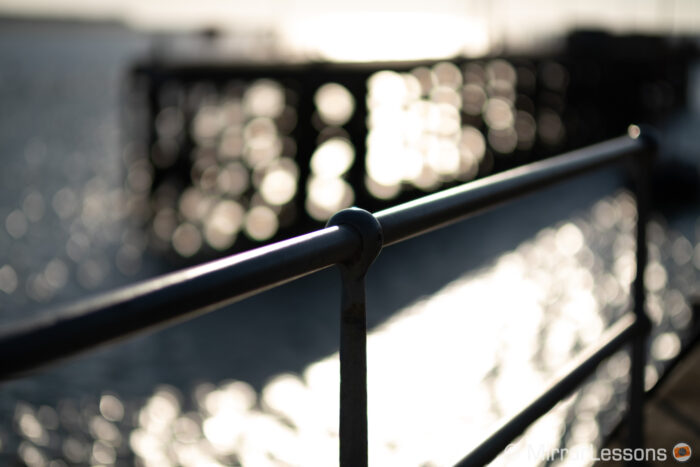
The 50mm f1.0 shows longitudinal chromatic aberration at f1.0 and f1.4. It is less severe from f2. You will need a bit of manual correction in post to get rid of it entirely.
We found similar results for the 56mm f1.2, but it displays a bit more CA at f2.0.
The Viltrox is the lens that suffers more from CA wide open. You don’t need an ultra-contrasty scene to notice it – it became evident in my first tests. It improves at f2 and is gone by 2.8.
The 50mm f2 is the one that suffers less from it. There is almost nothing at f2 and nothing at all from 2.8.
Flare
Each lens can display ghost flares in direct light, and the invasiveness depends on the intensity.
There can also be a bit of veiling and rainbow flare.
Distortion
The 50mm f1.0 shows a little bit of barrel distortion, and so does the 56mm f1.2 but it’s almost insignificant.
The Viltrox 56mm 1.4 has more apparent pincushion distortion.
The 50mm f2 appears to be perfect.
Autofocus performance
The 50mm f2 has the fastest AF motor. It switches quickly from one area to another without hesitation or back and forth movements.
The Viltrox is surprisingly good and not too far off the 50mm f2.
The 50mm f1.0 and the 56mm f1.2 are slower.
I took all the portrait samples seen in this article with face and eye detection on the X-T4, and it proved reliable. My only advice is to capture two or three frames each time, because occasionally, there can be a lack of accuracy.
With movements, some lenses struggle more. With the subject walking towards the camera, the 50mm f1.0 and 56mm f1.2 had a harder time keeping the subject in focus. You can see my results in the table below that shows the number of pictures in focus and the total number of pictures taken for each set-up.
You may have noticed that the total number of pictures taken varies from lens to lens, and even aperture to aperture. This happened because I set the camera to Focus Priority, which means that the shot is captured only when the image is in focus. So the reason the X-T4 saved fewer shots with the 50mm f1.0 for example is because it took more time to correct focus as the subject was approaching.
It’s worth noting that the depth for field is very shallow at f1.0 and even f1.2 and that every tiny movement of the subject can affect the end result. This is why the score at f2 is higher than at the larger apertures.
For video, all the lenses except the 50mm f1.0 (surprisingly) struggle to follow the subject smoothly, without jumping back and forth as the subject gets closer to the camera (a behaviour I noticed for my X-T4 review as well a while back).
If the subject suddenly appears in the frame, neither is capable of delivering a smooth change in focus, they all go in steps.
You can see the test in our YouTube video review at the beginning of the article.
I wanted to share a two more observations about the Viltrox lens. First, on the official website, they list the compatibility of all the Fujifilm models, and a few of them have limitations when it comes to the performance in C-AF, as well as video. The table below shows the compatible cameras and how they are affected.
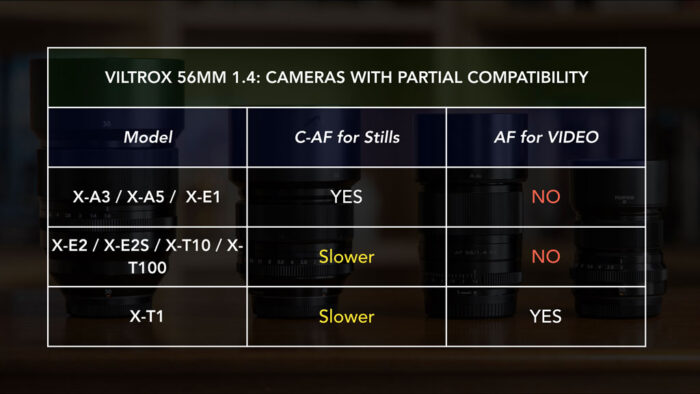
Second, I believe Viltrox designed the lens using the reverse engineering method because Fujifilm has only began to share its X-mount protocol with third parties yet (Tokina seems to be the first according to DPreview). For this reason, I am quite impressed by the performance of the 56mm 1.4.
Manual Focus
I mentioned the focus rings at the beginning of the article and how some feel smoother than others. However the feedback is not complete until I can test those rings with the camera turned on. This is because all four lenses have a fly-by-wire ring, meaning that you do not move the lens elements directly like a mechanical ring. Instead you send a signal to the camera that then instructs the chip on the lens to move the elements. So we need to assess how good the lens-camera communication is.
After my extensive sharpness test, I can conclude that the 50mm f2 and, to my surprise, the Viltrox 56mm are the best in terms of precision, despite the Viltrox not having the smoother focus ring when it comes purely to its rotation.
The 56mm f1.2 is the worst because there are small jumps from one point to another, and the transitions aren’t smooth so you end up going back and forth a lot to find the precise point. The 50mm f1.0 has a similar behaviour but it is not nearly as bad as the 56mm f1.2.
Then I need to talk about an issue with manual focus that looks like a problem of the camera – in my case, the X-T4. (I’d be curious to know if others have experienced the same.)
While doing my sharpness test, I realised that the X-T4 was moving the lens elements back and forth almost every time I pressed the shutter button, despite having the focus selector set to MF (Manual Focus). In short, it changed my focus point while pressing the shutter button.
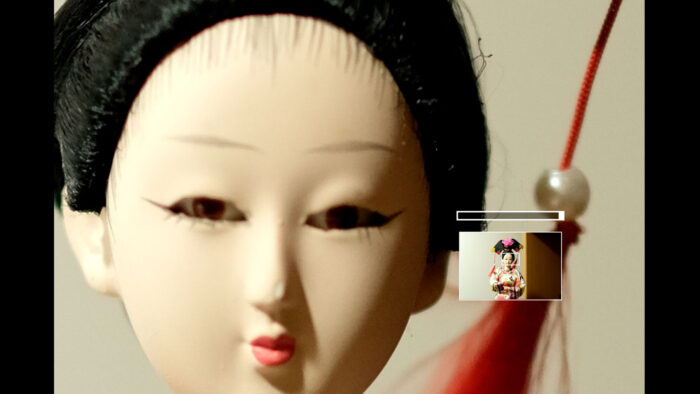
I don’t know why it does this. You might think that it would go back to the exact point I set manually, but many times it didn’t, to the point that my image often came out blurred. This can happen just before taking the shot or right after.
This annoying behaviour was more frequent with the 56mm f1.2, especially when working at the f2 aperture (but it also happened at other apertures, and with the 50mm f1.0 on occasion). This made it quite a challenge to capture the sharpest image for every aperture.
After various attempts, I found a workaround by setting the camera to S-AF, half-pressing the shutter button with magnification activated, and then fine tuning focus manually (possible with the AF+MF setting on). With this method, fully pressing the shutter button didn’t change my focus point, but it shouldn’t be this complicated. The camera should not refocus automatically if you’re working in manual focus mode. I hope this can be fixed with a firmware update.
Price
The 50mm f1.0 is the most expensive lens of the lot, followed by the 56mm 1.2. The small 50mm f2 and the Viltrox are much more affordable with the third party lens winning for the lowest cost.
Here are the prices as of November 2020:
- Fujifilm 50mm f1.0: $1500 / £1500 / €1650
- Fujifilm 56mm f1.2: $1000 / £850 / €900
- Fujifilm 50mm f2.0: $450 / £430 / €480
- Viltrox 56mm f1.4: $330 / £300 / €350
Conclusion
I’ve compared four lenses but really is more about two and two in the sense that the 50mm 1.2 and the 56mm 1.2 target more advanced photographers, whereas the 50mm f2 and the Viltrox have beginners and amateurs in mind. Still, the comparison has taught us some interesting things.
The 50mm f1.0 is quite impressive considering its unique features: there is no other lens with autofocus and such a bright aperture (for now), the optical quality is already excellent from f1.0, and it offers the most pleasant bokeh. The autofocus is good, but not the best in the category, although it is true that the lens has to move larger elements in comparison to the other three lenses. It is weather sealed which is another positive point.
The 50mm f1 is large and expensive but allow me to say this: the price is not exorbitant considering its specs and performance. Look for the fastest portrait lens in any full frame system and you’ll pay more. And if you are a one lens – one camera type of photographer, you can get used to the size and weight, and appreciate its unique qualities.
The 56mm 1.2 is the oldest lens and suffers from the quirks of Fuji’s early days: the AF is not super fast, the manual focus experience is terrible and the aperture ring is a bit too smooth. But it still defends itself well when it comes to optical quality, often beating the f1.0 lens in terms of sharpness. The size is right and balances well on most Fuji models. I think this remains the one that many photographers in search of a high quality lens without breaking the bank will go for.
I like the 50mm f2 a lot because it is really tiny: it can fit inside a jacket pocket, even a jean pocket. It’s the one that gets the closest to details, and the one that offers the sharper results if you’re interested in extreme close-ups. It also has the fastest AF motor, the most responsive aperture and focus rings and is weather sealed. However if you’re looking for the smoothest bokeh and the shallowest depth of field, this is not the lens for you.
Finally, we have the Viltrox, and this is the lens that surprised me the most in this comparison. I bought it for this article but I didn’t have high expectations. It’s not the sharpest at 1.4 but it’s not bad either, and it gets razor sharp from f2. The out of focus areas are pleasant, albeit not the best. The AF is fast, in fact only second to the small 50mm lens, and it’s the most affordable to buy. I have no doubt it’s going to be popular.
Check price of the Fujifilm XF 50mm f/1.0 R WR on:
B&H Photo | eBay
Check price of the Fujifilm XF 56mm f/1.2 R on:
Amazon | Amazon UK | B&H Photo | eBay
Check price of the Fujifilm XF 50mm f/2.0 R WR on:
Amazon UK | B&H Photo | eBay
Check price of the Viltrox 56mm f/1.4 on:
Amazon | Amazon UK | B&H Photo | eBay
Other portrait lenses for Fujifilm
Below you can find additional articles where we compare other portrait lenses for Fujifilm:
- Fujifilm 50mm f2 vs 56mm f1.2 vs 60mm f2.4
- Fujifilm 56mm f1.2 vs 90mm f2
- Fujifilm 80mm 2.8 Macro vs 90mm f2
- Fujifilm 56mm 1.2 vs 56mm APD
- Samyang 50mm 1.2 vs Fuji 56mm 1.2
Addition portrait samples
Here are additional images taken with the four lenses during my two week testing period. Enjoy!

